
How long does it take to learn Dutch?
This is one of the most frequently asked questions from aspiring Dutch learners, but it has no definite answer. It depends on many things, such as your native language, educational background, experience with languages, exposure, and motivation. It also depends on what “learning Dutch” means to you: Are you hoping to achieve a beginner, intermediate, or advanced level? These are all different goals with different timeframes. But whatever level you wish to achieve, there are some great tools you can use to learn Dutch faster.
In this article, you’ll learn how to realistically estimate how long it will take to learn Dutch, depending on your background and the proficiency level you have in mind. Then, we’ll give you some useful strategies you can employ to really master this language.

How long does it take to learn Dutch?
 Table of Contents
Table of Contents
- The Many Factors Involved
- From Beginner to Advanced
- Dutch Learning Strategies to Help You Learn Faster
- How DutchPod101 Can Help You Learn Dutch Faster
1. The Many Factors Involved
There are a few factors involved in determining how long it takes to learn the Dutch language. Because these things will impact your learning progress, you should take them into consideration as you plan your course of study.
Your Native Language vs. Dutch
Knowing a language with similar roots as Dutch will make it easier and quicker for you to learn this language. If you’re reading this article, it means your English level is already really strong, and this is great news for your Dutch learning!
Dutch is very similar to English and German, as these three languages are all part of the Indo-European family of languages and belong to the Germanic branch. This makes it much easier for English- and German-speakers to pick up the language, compared to speakers of other languages. (And lucky for you, Dutch won’t make you put up with difficult grammar like that found in German!)
So if you speak one of these languages, even if it’s not your native language, it will give you a headstart in your Dutch learning process.
Your Language Learning Experience
Have you ever learned another language before? If you already speak a foreign language, this knowledge and experience will help you a lot when learning a third language.
Your brain is accustomed to the challenges of language learning and you already know how to study a language. You’re familiar with the best ways to memorize vocabulary, practice your conversation skills, and understand those tricky tenses. Languages have a certain logic to them, and the more languages you learn, the more you start to understand how their grammar and structure work in general.
For these reasons, bilinguals often find it easier to learn a third language. If this is the case for you, you’ll probably save yourself quite a lot of time when learning Dutch.
Your Motivation
Why do you want to learn Dutch?
Do you just want to learn another language? Are you going to work in the Netherlands? Are you planning to study in this country? Or are you dating a nice Dutchie?
Whatever your reason may be, this motivation will impact your level of commitment and the amount of time you’re willing to invest in learning Dutch. Your motivation will also help you continue your studies and convince you not to stop, even when things get difficult. If you have a strong motivation, you’ll have a strong will to work hard and learn fast.

Have you already found your motivation to learn Dutch?
Your Approach
Your learning method plays a key role in how fast you’ll make progress. For a good learning method, it’s often advisable to combine different learning techniques, such as taking online Dutch lessons, finding a language exchange partner to help you practice your conversation skills, and listening to Dutch music or movies to train your listening skills. And of course, how successful your learning method is also depends on how much time you’re willing to invest in your studies.
Don’t worry about this yet, though. We’ll discuss some useful Dutch learning strategies in a few moments!
2. From Beginner to Advanced
Now, for the main topic at hand: How long does it take to learn Dutch as an English speaker?
According to FSI (Foreign Service Institute), an American government institution in charge of foreign language teaching to American diplomats and officials, it takes English speakers around 24 weeks of intensive classroom study to reach a general professional proficiency in Dutch.
However, be aware that this is based on the FSI approach. This is a very intensive study routine where students are taught in small classes of around 6 students, spend 6 hours daily with a teacher, and do 2 hours of self-study each day. In other words, it takes around 600 classroom hours for a student to be able to work professionally with the language.
Let’s see what this means for the different Dutch proficiency levels.
We’ll use the CEFR system (Common European Framework of Reference for Languages). This classification shows one’s proficiency level in a foreign language on a six-point scale, from A1 for beginners to C2 for those who have mastered a language. In this article, we’ll focus only on the A1 / B1 / C1 levels (not the second level for each), as these are a good reflection of what it takes to achieve the beginner, intermediate, and advanced levels.
- → Speaking of which, if you’re interested in doing a Dutch language exam, we have a complete guide to help you successfully pass these tests.
1 – Beginner Level

Do you want to reach the Dutch beginner level?
Let’s start with the beginner level, A1.
- ★ How long does it take to reach A1? Around 80-100 hours.
At this level, you can:
|
To be able to do this, you need to build a foundation to start understanding how the language works. This means studying things like:
- Word order
- Present tense
- Basic conjugation
Vocabulary is also important, but in this beginning phase, your focus will be on building lots of different sentences using few words. Don’t clutter your brain yet with too much vocabulary. With some basic nouns, verbs, and adjectives, you’ll be able to have basic conversations.
Try to practice your pronunciation from the beginning, as this will prevent you from making the same mistakes when you’re improving your Dutch in the next stages. Listen to a lot of Dutch music to become familiar with the pronunciation, practice your speaking skills with others, and record yourself so you can listen to your own pronunciation and find things to improve.
At the beginner level, flashcards will come in handy. You can use them to remember words, simple phrases, useful questions, or conjugated verbs—basically anything you want or need.
- → Also have a look at the DutchPod101 Absolute Beginner lesson pathway. This is the perfect pathway for learning the Dutch basics, containing 25 lessons (about 5.5 hours of material) that cover topics ranging from self-introductions to writing a postcard.
2 – Intermediate Level
B1 is the intermediate level.
- ★ How long does it take to reach B1? Around 350 to 400 hours.
At this level, you can:
|
To reach B1, you have to pass through the beginner level (A1) and the lower-intermediate level (A2). So there’s quite some ground to cover!
As you progress toward this stage, you’ll be learning more about Dutch-language patterns, structures, and vocabulary. This is also the level where you’ll start learning new tenses and new types of words, such as adverbs. You’ll start to understand the pronouns better, which will allow you to make smoother sentences. Using all of this new knowledge, you’ll be able to get into more details when speaking or writing Dutch.
If you’re not studying Dutch at school or university, this would be a good time to start some lessons with a teacher at a language school. Alternatively, you could try to find some affordable online coaching to make sure you’re on the right track.
- → Have a look at the DutchPod101 Lower Intermediate lessons to break out of the beginner level and pass through to the intermediate level. In only 25 lessons (around 4.5 hours), you’ll notice some improvement.
3 – Advanced Level
So, how long does it take to learn Dutch fluently? C1 is the advanced level.

Ready to achieve the advanced level?
- ★ How long does it take to reach C1? Around 850 to 900 hours.
At this level, you can:
|
Now you know how long it takes to learn Dutch fluently. You have to pass through the A1, A2, B1, and B2 levels. It’s double the time and effort of the intermediate level, but it’s worth it!
When you reach this stage, you’ll have expanded your vocabulary greatly, you understand the tenses, and you’re able to write and speak Dutch at a high level. You feel confident as you (almost) fully understand the language and you can discuss the most complex topics in Dutch.
To reach such a level of proficiency, you can, of course, use language classes or online teachers. However, try to really immerse yourself in the language as well. Read Dutch books, watch Dutch TV or movies, listen to music in Dutch, and try to find a native speaker you can talk with on a regular basis.
This all helps, but at the end of the day, the best way to improve your Dutch to an advanced level is to live in the country or to spend a few months there.
- → Have a look at our official curated pathway for Level 5, the best tool to help you become an advanced Dutch learner. These 50 lessons (around 2 hours) will help you go from fully intermediate to an advanced learner.
3. Dutch Learning Strategies to Help You Learn Faster
As we mentioned before, how long it takes to learn Dutch fluently depends on your exposure to the language, how much time and effort you put into it, and the strategies you use.
With the right strategies, you’ll be able to learn Dutch faster and more effectively!
1 – Make Use of Online Classes
Wondering how to learn Dutch online? We hear you!
With online classes, you can learn Dutch anywhere and anytime you want. There are online classes for every level and they’re more affordable than private lessons or language schools. They’re also the most flexible option, as you can adapt them to your schedule.
There are many websites you can choose from. Some are entirely free, while others have a mixture of free resources and paid resources with advanced services. Try to choose a website where you can track your progress and work over time; this way, you can really be aware of your improvement.

Be efficient and learn where and when you can.
- → Check out DutchPod101 to see what online lessons we offer. Even without a paid subscription, you can access a lot of free content, including vocabulary lists, a YouTube channel, and countless lessons for students at every level.
2 – Make Learning Dutch Fun
Try to make learning Dutch as enjoyable as possible—learning a new language shouldn’t be boring.
Of course there are some boring parts, such as grammar rules or those endless lists of verb conjugations, but try to mix it up with some entertaining learning tools. For example, you might enjoy watching a Dutch TV show with subtitles, or listening to Dutch music and trying to translate or understand the lyrics. Studying this way will make you more inclined to continue your Dutch studies!
- → The Netherlands has some great Dutch TV shows and series for beginners, intermediate learners, and advanced students. We recommend giving them a try!
3 – Practice is Key
To really learn a language, you have to practice it a lot. So try speaking, reading, writing, and listening in Dutch as much as you can. It’s okay to make mistakes, and you don’t even need that many words or an extensive knowledge of complicated grammar rules to express yourself.
Try to put everything you learn into practice, as this is truly the only way to improve your Dutch. Really immerse yourself in the language through TV series, books, music, or even podcasts. Start writing Dutch stories and talk to every Dutch person you meet. You can do it!
4 – Use Word Lists to Build Up a Solid Vocabulary
Are you struggling to practice the language because you feel like you don’t have a solid vocabulary yet? Then use vocabulary word lists to expand your personal word bank. You can choose a topic you find interesting and learn words related to that topic. DutchPod101 has vocabulary lists on many topics, such as love, family, animals, work, and more.
You may even want to set yourself some vocabulary learning goals. For example, to memorize one or two vocabulary lists a week, or one new word a day.
5 – Create a Study Schedule and Set Some Goals
When learning a new language, structure is key. Language learning is a big task, and there’s so much to learn. Therefore, it’s very important that you create a clear study schedule and set some goals. This will give you the motivation to continue and not give up. With every goal you achieve, you know you’re improving and you’ll be motivated to continue with your other goals. A study schedule gives you the consistency needed to achieve them.
How DutchPod101 Can Help You Learn Dutch Faster
In this guide, you learned that the time it takes to learn Dutch depends on certain factors, such as the level of proficiency you want to reach and the Dutch learning strategies you employ. We also gave you pointers on how to learn Dutch effectively at each stage.
Did we forget any important language learning tips? Do you already feel motivated to start learning Dutch?
Make sure to explore DutchPod101.com, as we have plenty of free resources to help you learn Dutch quickly and efficiently. Our vocabulary lists are another great way to improve your knowledge of Dutch words and their pronunciation.
Remember that you can also use our Premium PLUS service, MyTeacher, to get personal one-on-one coaching with a private teacher who will help you master the Dutch language even faster. He or she will give you interesting exercises, useful recorded audio samples, and personalized feedback so that you can become fluent in Dutch before you know it.
Happy learning on DutchPod101.com!

32 Useful Dutch Business Phrases You Should Know

Can you imagine going to a meeting in the Netherlands’ business world without having any idea about Dutch business customs? Or going into a formal situation and not knowing how to use the formal “you”? (Yes, it’s U, but do you know how to conjugate it?)
The business world varies from country to country, and even within a single country, there’s a big difference between the formal and informal worlds. So although you can handle yourself in the Netherlands in casual settings, you might need to study business Dutch phrases and get some useful tips on Dutch business etiquette before starting work there.
Spare yourself all of the awkward situations by getting prepared with these thirty-two useful Dutch business phrases. In this guide, you’ll learn all the phrases you need for a variety of work-related situations, from nailing your job interview to going on business trips.
Let’s get down to business in the Netherlands!
 Table of Contents
Table of Contents
- Formal Greetings, Introductions, and Goodbyes
- Nailing a Job Interview
- Interacting with Coworkers
- Sound Smart in a Meeting
- Handling Business Phone Calls and Emails
- Going on a Business Trip
- How DutchPod101 Can Help You Learn More Dutch
1. Formal Greetings, Introductions, and Goodbyes
Before we dive into the more-specific Dutch business phrases, let’s first cover the basics: the formal greetings, introductions, and goodbyes. We’ll even let you know which form of “you” to use.
1- Greetings
When greeting someone, a handshake is the way to go in formal situations. So, when meeting someone in a business setting, give that person a handshake and combine it with one of the following greetings:
1. Dag. (“Hello.”)
This is the perfect basic greeting, and it works in almost any situation. It’s neither too formal nor too relaxed, so you can’t go wrong with it.
2. Dag, aangenaam kennis te maken. (“Hello, nice to meet you.”)
This is the perfect formal greeting when you’re meeting someone for the first time.
3. Goedemorgen. / Goedemiddag. / Goedenavond. (“Good morning.” / “Good afternoon.” / “Good evening.”)
Of course, you should use these according to the time of day (until twelve p.m., until six p.m., and until twelve a.m., respectively).
- → To learn more greetings along with their pronunciations, have a look at our vocabulary list on common ways to say hello.
2- Introductions
You’ve said your greetings, so now it’s time to let them know your name:
4. Ik ben ___. (“I am ___.”)
Simply put your name in the blank. For example: Ik ben Robert Green or Ik ben Valentina Blanco.
It’s not the most formal introduction, but it is the most common one. Using your first and last name makes it more formal (and it’s also the norm in the Netherlands’ business world to introduce yourself with your last name).
- → To discover more Dutch introduction phrases, have a look at our vocabulary list of 10 lines you need for introducing yourself.
3- Goodbyes

The conversation is over, so make your good impression last with a smooth goodbye. In general, it’s polite to shake hands while saying one of these goodbyes:
5. Dag. (“Goodbye.”)
Yes, this also means goodbye. It’s a basic Dutch goodbye that can be used in almost any situation, including many business settings.
6. Tot ziens. (“See you.”)
Although it doesn’t sound very formal in English, in Dutch, this goodbye can definitely be used in more-formal situations. People use this phrase when they know that they’ll see the other person again (not hypothetically; the Dutch take these things quite literally).
7. Het was leuk u te ontmoeten. (“It was nice to meet you.”)
This is a friendly thing to add when saying your goodbyes to someone you’ve just met for the first time. But be aware that it’s not appropriate for all situations. Dutch people are not fake, so only use it when you’re being real.
- → Find more ways to say goodbye in Dutch and practice your pronunciation with our vocabulary list of common ways to say goodbye.
4- Jij or U?
You now know how to greet, introduce yourself, and say your goodbyes in Dutch. But before moving on to more-complicated Dutch business phrases, we want to clear up any doubts about the Dutch “you.”
In Dutch, there are two distinct pronouns for “you”: Jij (casual “you”) and U (formal “you”). Whenever in doubt, you can’t go wrong with U. This is especially the case when you’re talking to someone older than you.
In the Netherlands, there are no strict rules on when to use which pronoun; it depends on the people, the business, or the branch of work you’re in. A simple rule is to follow the lead of the other person. If they use Jij when addressing you, answer with Jij. Otherwise, just stick to the formal U.
2. Nailing a Job Interview
If there’s one situation where you’ll need to up your Dutch business phrases game, it’s definitely a job interview.
The great thing about job interviews is that you normally have a few days to prepare for it. This gives you plenty of time to look up all of the Dutch phrases for business you think you’ll need to express who you are and what you do. If you want a head-start, make sure you check out our special introduction article.
Optimize your skills even more with these useful Dutch business phrases for nailing a job interview:
8. Ik heb jarenlange ervaring met ___. (“I have years of experience with ___.”)
9. Ik onderscheid me in mijn werk door ___. (“I distinguish myself in my work by ___.”)
10. Ik ben geïnteresseerd in deze baan omdat ___. (“I am interested in this job because ___.”)
What should you do if you don’t understand the interviewer? Ask him or her to repeat the question (but don’t ask too many times):
11. Zou u uw vraag nog een keer kunnen herhalen? (“Could you repeat your question, please?”)
Now it’s time to end the conversation with an appropriate job interview goodbye (with a handshake, of course):
12. Bedankt voor het gesprek. (“Thank you for the conversation.”)

3. Interacting with Coworkers
You aced your interview and you’re starting your new job in the Netherlands. Hurray! Now we’ll give you some common business phrases in Dutch that you can use to interact with your coworkers.
- → First, get familiar with the most useful words for your new job with this workplace vocabulary list.
So, you’re new at work and you need some help (understanding how a system works, how to use the printer, or how to make the coffee machine work):
13. Zou je/u mij kunnen helpen? (“Could you help me?”)
Whether you use jij or u depends on your workplace, so follow your colleagues’ lead. The same applies to the next phrase, which you can use if you want to praise someone’s work:
14. Ik ben erg blij met jouw/uw werk. (“I am very happy with your work.”)
This is a more formal compliment that you can say to some of your employees.
15. Goed bezig! (“Doing good!”)
This is a more casual compliment that works well with coworkers.
16. Bedankt voor de fijne samenwerking. (“Thank you for the nice collaboration.”)
This phrase is most appropriate after you’ve finished a project with someone, and not if you’re going to keep on working with that person.
Are you feeling comfortable with a certain coworker and would like to ask them out for a drink after work sometime? Then the following phrase will come in handy:
17. Heb je zin om na werk wat te drinken? (“Would you like to have a drink after work?”)
Doing business with Dutchies isn’t all about time spent in the workplace; it’s also about forming relationships. In the Netherlands, it’s quite common to drink after work on Fridays with colleagues. There’s even a word for it: vrijdagmiddagborrel (“the Friday afternoon drinks”). Depending on where you work, though, this afternoon drinking session could take place on a different day.

4. Sound Smart in a Meeting
Would you like to sound smart in a meeting? All you need are some smooth but common business phrases in Dutch.
If you’re participating in a Dutch business meeting and would like to pitch an interesting idea or solution, throw in one of the following phrases:
18. Ik geloof dat we wel tot een compromis kunnen komen. (“I believe we can find a compromise.”)
19. Ik denk dat ik wel een oplossing kan voorstellen. (“I think I can suggest a solution.”)
If you’ve just finished your pitch or presentation, then end it with the following phrase:
20. Heel erg bedankt voor jullie aandacht. (“Thank you very much for your attention.”)
Use jullie (“you,” plural) if there are several people in the meeting; if not, use uw in its place.
Is there something you would like to discuss in the next meeting? Then you can use this phrase:
21. Kunnen we dit tijdens de volgende vergadering bespreken? (“Can we discuss this matter during the following meeting?”)
By using even just one of these bad boys, you’ll definitely make an impression with your professional Dutch and your ability to get to the point and present your ideas.
- → Do you want to be able to prepare a meeting with a Dutch colleague? Then have a look at our Dutch listening video on preparing for a Dutch business meeting.
→ Or have a look at these phrases for Doing Business Successfully.
5. Handling Business Phone Calls and Emails
Handling communication in Dutch business settings may be challenging, and you might struggle with which words you should or shouldn’t use.
To give you a head start, here are some phrases you’ll need when writing a Dutch business email:
22. Geachte heer, mevrouw, (“Dear Sir / Madam,”)
You can start an email this way if you don’t know the name or gender of the person you’re writing to. If you do know the person’s name, you can write, for example: Geachte meneer Janssen (“Dear Mr. Janssen”).
Now that you’ve used the perfect formal email greeting and introduced yourself, you should continue with the following phrase to explain why you’re writing this email:
23. Wij schrijven u naar aanleiding van ___. ( “We are writing to you regarding ___.”)
And to end the email in a polite way, use the following phrase:
24. Mocht u meer informatie willen, kunt u altijd contact met mij opnemen. (“If you require any further information, feel free to contact me.”)
- → Do you want to learn more? Have a look at this useful page on writing Dutch business letters or emails.

Let’s now continue with some useful Dutch for business phone calls:
25. Hallo, u spreekt met ___. (“Hello, you are talking with ___.”)
26. Spreek ik met ___? (“Am I speaking with ___?”)
27. Ik bel u vanwege ___. (“I am calling you because ___.”)
What if someone is calling you, and you’re unsure of what to do or how to connect them with someone else? Just use this phrase and put them on hold:
28. Een momentje alstublieft. (“Please wait for a moment.”)
- → You can find more examples with audio recordings on our vocabulary list of useful phrases for a phone call.
6. Going on a Business Trip
Last but definitely not least, what phrases do you need to know for going on a business trip to the Netherlands?
Let’s first have a look at some phrases that can be useful in your hotel or during other moments of your business trip:
29. Ik heb een kamer gereserveerd. (“I have a reservation [for a room].”)
30. Ik ben hier voor zaken. (“I’m here on business.”)
31. Accepteert u credit cards? (“Do you accept credit cards?”)
If your host has been especially helpful and kind to you, then definitely use the following phrase when saying your goodbyes:
32. Bedankt voor de gastvrijheid. (“Thank you for your hospitality.”)
- → Would you like to learn more business Dutch phrases? Have a look at our lesson library and learn business Dutch for beginners alongside other useful words and phrases.
7. How DutchPod101 Can Help You Learn More Dutch

In this guide, you’ve learned all about business Dutch phrases, from the basics to useful phrases for job interviews, interactions with coworkers, meetings, emails, phone calls, and business trips. Which of these common business phrases in Dutch will you use the most?
Are you ready to get down to business in the Netherlands? Or would you like more help first?
DutchPod101 has many free resources, such as vocabulary lists with audio recordings, to help you prepare for any business setting.
Or do you prefer a private teacher? DutchPod101 also offers personal one-on-one coaching with our Premium PLUS MyTeacher service. Boost your Dutch with your private teacher’s interactive exercises, personalized feedback, and useful tips.
Happy learning, and good luck in your business endeavors!

Learn Dutch Online: YouTube Channels to Improve Your Skills

Would you like to improve your Dutch while having fun? No, it’s not too good to be true.
Learning a language is more than just cramming endless vocabulary lists into your memory or picking your brain to understand those tricky Dutch grammar rules. To really learn Dutch, it’s crucial that you find ways to make learning more fun. If you enjoy learning, you’ll stay motivated.
So what might be a fun Dutch learning method? As the title already gave away, you can have fun and learn Dutch online with YouTube.
Yes, YouTube is a great medium for improving your Dutch. There are several Dutch YouTube channels dedicated to teaching foreigners the language, and plenty more that you can watch just for fun and still pick up the language. And due to YouTube’s infinite offering of videos, you’ll never get bored!
In this article, you’ll discover the ten best Dutch YouTube channels in a variety of categories. Starting with the DutchPod101 channel, you’ll find everything you need to immerse yourself in the Dutch language and make quick progress.
- → Would you like to know other ways to effectively learn a language? Then have a look at these Habits for Highly Effective Language Learners.
 Table of Contents
Table of Contents
1. Learning Dutch Online with YouTube
Ready to improve your Dutch on YouTube?
To make it easy for you to find what you need, we’ll provide you with a category, a level, and a short summary of each channel.
Have fun and learn some Dutch!

1. DutchPod101 YouTube Channel
Category: Language
Level: All levels, depending on the video
Since you’re already familiar with DutchPod101, you might also know about the DutchPod101 YouTube channel. And let’s be honest—there’s just no better YouTube channel out there for learning Dutch.
Thanks to our wide variety of free content, you’ll surely be able to find what you’re looking for. You name it and the DutchPod101 YouTube channel has it: from grammar and vocabulary to listening, pronunciation, podcasts, and cultural insights. Our channel features some great tools for improving your Dutch, such as listening comprehension videos, new word exercises, and useful videos on how to learn Dutch online with YouTube.
This channel really has all the resources you need, for all levels and about every topic imaginable.
2. Dutchforn00bs
Category: Language & Culture
Level: All levels, depending on the video
Don’t worry, we won’t spend the entire article tooting our own horn. There are many other Dutch language YouTube channels that will help you improve your Dutch in a diverse and interactive manner.
Dutchforn00bs is such a place, offering insight into Dutch grammar, pronunciation, and culture.
As you learn Dutch, YouTube videos like those on Dutchforn00bs will prove to be an invaluable resource. This channel provides a diverse offering of videos on numerous language and culture topics, and breaks them down for easy comprehension. To give you some examples, this channel has videos on the pronunciation of letters, grammar tutorials, and speaking tips.
3. Learn Dutch with Niels!
Category: Language
Level: All levels, depending on the video
We continue with another channel that might just be a nice distraction from your Dutch textbooks. Learn Dutch with Niels! offers several useful video lessons on learning Dutch, from basic grammar to word order. Dutch YouTuber Niels is a former teacher with a passion for his old profession; you’ll certainly notice this in his Dutch lessons on YouTube.
On this channel, you can expect to learn more about Dutch sentence structures, grammar, and the meaning and use of verbs. In addition, you’ll learn to produce your own sentences and ultimately become a more flexible and autonomous Dutch speaker.
- → Would you like to learn more Dutch verbs? Discover everything you need to know in our vocabulary list of The 50 Most Common Verbs!
4. Learn Dutch Online With Rozemarijn
Category: Language
Level: All levels, depending on the video
Improve your Dutch by watching these videos in chronological order; we recommend starting at the bottom of the page and working your way up. This way, you’ll start with the easier lessons, and flow with the logical order of the videos. So sit back, enjoy the show, and learn more about basic Dutch words, pronunciation, spelling, and grammar. Each video features spoken and written Dutch, as well as simple English subtitles. Practice your pronunciation and really learn to speak Dutch with YouTube.
The videos on this channel are made by a Dutch YouTuber named Rozemarijn (Rosemary). She studied Dutch Language and Literature at the University of Utrecht, and started making videos for family members who grew up abroad.
- → Do you want to improve your Dutch pronunciation? Start talking like a real Dutchie with our list of The Top 10 Hardest Words to Pronounce.
5. Learn Dutch with Alain
Category: Language & Culture
Level: All levels, depending on the video
Let’s give you one more Dutch language learning YouTube channel: Learn Dutch with Alain. Dutch YouTuber Alain is a Dutch language teacher who uses his classroom experience to create diverse, fun, and interactive videos.
You can definitely say that his channel has a wide variety of lessons, from learning new words to useful learning tools and interactive exercises—you can even listen to the news in slow Dutch! With humor and precision, he tackles all of the typical challenges you’ll face when learning Dutch.
And with a new video out every Monday, you’ll have more than enough to see and learn.
6. The Netherlands & Dutch Culture
Category: Culture
Level: All levels; the content is in English
How can a language really be useful if you can’t understand the country’s context and culture?
Lucky for you, if you want to brush up on Dutch culture, YouTube has you covered.
After learning a bit about the Dutch language with the channels above, just sit back and watch something from The Netherlands & Dutch Culture. Each video works with a certain theme, often linked to topics that are hot and happening. In each video, you’ll not only get a fun and clear description of Dutch culture, but also learn some Dutch words related to the topic.
7. Nickelodeon Nederlands
Category: TV Shows
Level: Beginner
Watching cartoons and other Dutch children’s TV shows: could learning Dutch be any more fun?
You might be familiar with Nickelodeon, the American television channel for children. But did you know that a lot of other countries (such as the Netherlands) also have their own Nickelodeon channel in the native language?
Luckily, Nickelodeon Nederlands allows you to watch your favorite kids’ shows on YouTube in Dutch. We’re talking about such shows as SpongeBob SquarePants, The Thundermans, School of Rock, and Henry Danger!
What are you waiting for?
8. NOS Jeugdjournaal
Category: News
Level: Beginner
NOS jeugdjournaal (“NOS Youth Journal”) is a Dutch television news program for children. It presents real news in language that young viewers can understand. The presenters and reporters also speak very clearly, making it the perfect news medium for Dutch language learners. Even beginners will find much of the content comprehensible due to the simple language and fun videos!
This Youth Journal has a daily evening program on the Dutch television, running every night at seven o’clock for twenty minutes on NPO 3, as well as a short program in the morning during the week. A lot of these stories are afterwards posted on the NOS Jeugdjournaal YouTube channel.
9. Proefkonijnen
Category: TV Shows
Level: Intermediate
Improve your Dutch listening skills by watching these entertaining and informative videos. You won’t be able to stop watching these guys and their crazy experiments.
Can you function when the world is literally turned upside-down? Can you get a mosquito drunk with blood from a drunk human? In the Dutch TV show Proefkonijnen (“Guinea pigs”), Jurre Geluk and Kaj van der Ree will give you down-to-earth answers to the craziest questions.
And luckily, you can also enjoy it on YouTube. Because these videos are very entertaining and fun, with a lot of self-explanatory images, they’re perfect for intermediate learners. Watch the show, have a laugh, and try to understand what’s going on. (Believe us, they’ll make you want to understand it all.)
- → Would you like to understand these videos better? Discover How to Improve Your Listening Skills.
10. NL Artiesten Afspeellijsten
Category: Music
Level: All levels
With these Dutch music playlists, you’ll be able to discover a lot of Dutch music. And as you might know, listening to music helps you get familiar with a language. By listening to your favorite music genres in Dutch, you’ll both familiarize yourself with the pronunciation and start to understand the lyrics.
You can just play the music in the background or start dancing to it. And don’t forget to look up the lyrics to improve your understanding. Soon, you’ll be singing along!
- → Would you like to talk with your Dutch friends about YouTube? Then have a look at our useful vocabulary list for Talking About YouTube.
2. How DutchPod101 Can Help You Learn More Dutch

In this guide, we’ve shown you which channels you can’t miss when you want to learn Dutch online with YouTube. Your first stop should definitely be the DutchPod101 YouTube channel, with great podcasts, grammar and vocabulary lessons, and other YouTube videos dedicated to the Dutch language and culture. Be sure to explore our Playlists to easily find the category and topic you need. You’ll quickly see why we confidently say it’s the best channel out there!
And of course, if you would like to see some additional pronunciation, culture, news, cartoons, comedy, or music videos, you have the other channels to pick from.
So which YouTube channel will you watch first? Or would you like to improve your Dutch first so that you can really get the most from these YouTube channels?
To get a head start on your language learning, we recommend that you check out the many free resources from DutchPod101, especially our themed vocabulary lists with audio recordings.
Would you prefer a private teacher? DutchPod101 has the MyTeacher service for Premium PLUS members, through which you can get personal one-on-one coaching. Improve your Dutch quickly with your private teacher’s personalized feedback, tips, and interactive exercises.
Whatever path you choose from here, we wish you very happy Dutch learning!

Is Dutch Hard to Learn?

Are fear and uncertainty keeping you from getting started with Dutch?
This is a common issue for many potential Dutch-learners. They tend to wonder things like: “Is Dutch hard to learn?” and “Is learning Dutch really worth it?”
If this sounds like you, you’ve come to the right place. In this article, we’re going to answer all of your questions and clear up any doubts you may be having.
At first, Dutch might seem like a very difficult language, but it’s surprisingly easy for English- and German-speakers. Dutch has even been described as a combination of the English and German languages! This makes it one of the easiest languages to learn for speakers of either language. That said, learning Dutch will take some time and effort, no matter what your native language is.
So, is Dutch hard to learn? No, it isn’t. And in this article, we’ll show you why.
DutchPod101 will give you a clear overview of what things might make Dutch hard to learn, and which parts are easy-peasy for new learners. With the right tools, you can overcome even the more challenging aspects of the language. We’ll show you that you can master the Dutch language, and we’ll even tell you how.
 Table of Contents
Table of Contents
- Is Dutch a Hard Language to Learn?
- Why is Dutch Easy to Learn?
- What are the Best Ways to Start Learning Dutch?
- Why is DutchPod101 Great for Learning Dutch?
- Summing it Up…
1. Is Dutch a Hard Language to Learn?

So, let’s start with the more challenging side of the Dutch language: Why is Dutch hard to learn?
Every language has some tricky parts, and the only way to manage them is to be aware of them. In the long run, this will make learning Dutch a lot easier for you and provide you with a solid learning base.
1. Tricky Pronunciation
Many new learners find Dutch hard to pronounce.
Even the most fluent foreign Dutch-speakers struggle with this, as the language has the weirdest combinations of letters. For example, there are consonant combinations like: nk, sch, ng, and nk. In addition, you’ll find some consonant combinations that form one sound, and others that form two sounds.
Consonant combinations that form one sound:
| Letter | (English) Pronunciation | Example |
| ng | It sounds like the [ng] in the English word “cling” or “thing.” | lang (“long”) |
| ch | The ch has three different pronunciations: 1) Like the Dutch “g,” 2) like [sh] in the English word “ship,” and 3) as [k] in the English word “Christ.” | 1) licht (“light”), 2) douche (“shower”), and 3) Chris (“Chris,” the name) |
| sj | It’s pronounced like [sh] in the English word “ship.” | sjaal (“scarf”) |
Now let’s look at the combinations that form two separate sounds:
| Letter | (English) Pronunciation | Example |
| sch | It’s pronounced like an [s] followed by a harsh [ch], as in the Scottish word “loch.” | schaap (“sheep”) |
| nk | It’s the same sound as in the English word “link.” | pink (“little finger”) |
| kn | Unlike in English, a k before an n is pronounced. You’ll hear both sounds separately. | knoop (“button”) |
| ps | Unlike in English, a p before an s is pronounced. You’ll hear both sounds separately. | psycholoog (“psychologist”) |
And it’s not just the consonants! There’s another tricky aspect to Dutch pronunciation: diphthongs. These are combinations of two vowels that make a fluid sound that no vowel makes on its own in Dutch:
| Letter | (English) Pronunciation | Example |
| ai | This Dutch diphthong is pronounced as [I] like in “I am” in English. | mais (“corn”) |
| au | It’s pronounced like [ow] in the English word “now.” | auto (“car”) |
| ei | It’s pronounced as the [i] in the English word “find.” | ei (“egg”) |
| eu | This sound doesn’t exist in English, but you may know it from the French word “beurre.” | leuk (“fun”) |
| ie | It’s pronounced like [ee] in the English word “bee.” | mier (“ant”) |
| ij | It’s pronounced exactly the same as the Dutch ei diphthong. | wijn (“wine”) |
| oe | It’s pronounced like [oo] in the English word “pool.” | moe (“tired”) |
| ou | This diphthong has exactly the same sound as the Dutch au diphthong. | koud (“cold”) |
| ui | This sound doesn’t exist in English, but it’s a combination of the [a] sound in “man” followed by a long Dutch u. | muis (“mouse”) |
All you can do is practice, practice, and practice even more. Luckily, DutchPod101 is here to help.
- → Would you like to work on your Dutch pronunciation? Have a look at the Only Dutch Pronunciation Guide You’ll Ever Need or try to master this list of the Top 10 Hardest Words to Pronounce.

2. Confusing Word Order
So let’s continue with another reason why people find the Dutch language hard to learn: the confusing word order.
Of course, simple sentences can just be made with a subject and a verb:
Subject + Verb
- Ik praat. (“I talk.”)
- De jongen verft. (“The boy paints.”)
Adding a direct object to the mix is rather easy as well:
Subject + Verb + (Direct) Object
- Ik praat met mijn vader. (“I talk to my father.”)
- De jongen verft de deur. (“The boy paints the door.”)
The direct object in Dutch is called lijdend voorwerp (“leading entity/object”). It normally comes right after the verb.
However, when the sentences get longer, the word order gets more confusing. It becomes especially difficult when there are several verbs in the mix, because you’ll have to start splitting the verbs—something you don’t do in English. So be aware.
How do you know if you should split a verb or not? Be cautious when using the present perfect, past perfect, future simple, future perfect, conditional, and conditional perfect verbs. When you use them, you may need to put a verb at the end of a sentence:
Subject + Working verb + Adverb + (Adjective +) Direct object + (Adjective +) (Indirect object +) Other verb
Here are examples for all six Dutch tenses that can make sentences end with a verb:
- Present perfect:
De jongen heeft in het huis de gele deur met zwarte verf geverfd.
(“The boy has painted the yellow door in the house with black paint.”)
- Past perfect:
De jongen had in het huis de gele deur met zwarte verf geverfd.
(“The boy had painted the yellow door in the house with black paint.”)
- Future simple:
De jongen zal in het huis de gele deur met zwarte verf verven.
(“The boy will paint the yellow door in the house with black paint.”)
- Future perfect:
De jongen zal in het huis de gele deur met zwarte verf hebben geverfd.
(“The boy will have painted the yellow door in the house with black paint.”)
- Conditional:
De jongen zou in het huis de gele deur met zwarte verf verven.
(“The boy would paint the yellow door in the house with black paint.”)
- Conditional perfect:
De jongen zou in het huis de gele deur met zwarte verf hebben geverfd.
(“The boy would have painted the yellow door in the house with black paint.”)
Do you find this very confusing? Try not to worry too much about it. When you’ve just started learning Dutch, you don’t have to worry about little details like this yet. For now, just be aware that these rules exist; it will help a lot when you’re a more advanced Dutch-learner.
- → Do you want to start learning Dutch? Then you should study more about Dutch sentence patterns. Check out this useful lesson series on the Top 10 Sentence Patterns for Beginners.
3. De vs. Het – Two Ways to Say “The”
The Dutch language has two different ways to say the word “the”: de and het. In theory, all masculine and feminine words get de while all neuter words get het:
- De vrouw (“The woman”)
- De man (“The man”)
- Het kind (“The child,” neuter)
However, a lot of Dutch words don’t have a clear gender indication, so it can be quite challenging to know which word to use. It’s something you just have to hear, memorize, and develop a knack for.
Here are some tips to help you overcome this confusing ordeal:
- All words referring to persons (individuals) are de-words (de voetballer = “the football player” / de president = “the president”).
- All plural words get de (de katten = “the cats” / de stoelen = “the chairs”).
- All words made smaller with (e)(t/d)je are neuter (het kindje = “the little child” / het bloemetje = “the little flower”).
- Words ending with -el or -er are often de-words (de tafel = “the table” / de bakker = “the baker”).
- All infinitive verbs that are used as a noun have the neuter het (het fietsen = “the cycling” / het schrijven = “the writing”).
- Words with standard prefixes like ge-, ver-, ont-, and be-, and those without an -ing ending, are neuter (het verhaal = “the story” / het ontslag = “the resignation”).
- Almost all words with the standard suffixes -ing, -ij, -ie, -e, and -heid are feminine (de politie = “the police” / de schoonheid = “the beauty” / de drukkerij = “the printing company” / de dame = “the lady”).
We know, we know. Why is Dutch so hard to learn?
Now that we’ve shown you some of the trickier aspects of the Dutch language—and how to learn them well—let’s get to the good news.

2. Why is Dutch Easy to Learn?
You’ve just survived the three most challenging parts of the Dutch language, but we promise that it’s not all bad. Dutch is actually a pretty easy language to learn with the right tools. Let’s show you why.
1. Dutch is Very Similar to English and German
As we mentioned in the introduction, Dutch is very similar to English and German. We’re guessing that you already speak one of those two languages (probably English since you’re reading this article). That’s great! It means that you have a head-start: Dutch is one of the easiest languages to learn for native English– or German-speakers.
Why is that?
Dutch is part of the Indo-European family of languages and belongs to the Germanic branch, as do English and German. That’s why Dutch is quite similar to those languages (but without the difficult grammar of the German language, lucky for you).
2. You Already Know Some Dutch Words
You may not realize it, but you probably already know some Dutch words.
Back in the day, the Dutch had quite some influence all over the world, and they brought their language with them. That’s why some English words have Dutch origins, as do some other languages such as German, Spanish, and French.
But these won’t be the only words you already know! It also works the other way around, as the Dutch language adopts a lot of foreign words and expressions. German, English, and French words are often used in Dutch conversations.
Here are some examples:
- From German: Bühne (“Stage”), Folie (“Foil”), Föhn (“Hairdryer”)
- From English: Bar, Editor, Manager
- From French: Abonnement (“Subscription”), Actrice (“Actress”), Capuchon (“Hood,” of a jacket)
And don’t forget those more modern words that the Dutch adopt into their language: whatsappen (“to whatsapp”), bad hair day, out-of-the-box denken (“to think out of the box”), netflixen (“to Netflix”).
3. Dutch People Appreciate Your Efforts
The Dutch are used to foreigners speaking English with them. They don’t really mind it, as they accept that their language isn’t very popular or widely spoken. However, when foreigners (try to) speak Dutch, native speakers are pleasantly surprised and are happy to help. They’ll appreciate your effort, try to speak extra-slow, and help you whenever you get stuck.
You might need to make it clear first that you really prefer to speak Dutch, as they’ll switch to English out of habit if you don’t. But once that’s cleared up, their willingness to help will turn out to be one of the best things about learning the language.
4. Your Pronunciation and Grammar Don’t Have to be Perfect
The Dutch aren’t too picky or arrogant regarding their language. Mistakes are okay, and even Dutch natives can be quite sloppy with their own language. Grammar rules aren’t always taken into account and even pronunciation isn’t always perfect.
The Netherlands may be a small country, but it has a lot of dialects and accents from region to region. That’s why there’s no such thing as perfect Dutch pronunciation. Take, for example, the hard g sound in the north and the soft g sound in the south.
Of course, you should try to learn Dutch the best you can, but it’s simply okay to make mistakes.
3. What are the Best Ways to Start Learning Dutch?
Would you like to learn Dutch? There are many reasons why you would benefit from learning the Dutch language: it broadens your mind, gives you new opportunities, and is a great way to get to know another culture.
With the right motivation and some useful learning tips, you’ll be able to master this not-so-complicated language. So how can you learn the Dutch language quickly and easily?

1. Create a Study Schedule and Set Some Goals
Learning a new language can be quite overwhelming—there’s so much to learn! So how can you approach this big task in an orderly manner?
Structure is key. Many new language-learners get started quite unorganized. They start off strong, but after a few weeks, they begin to lose motivation. To avoid this fate, it’s very important that you create a clear study schedule and set some goals. Goals give you motivation and something to strive for; a study schedule gives you the consistency needed to achieve those goals.
2. Use Word Lists to Build Up a Solid Vocabulary Base
If you want to speak and understand Dutch, you need a solid vocabulary base. But with so many words to learn, where should you start? Luckily, there are some tools available to help you build up your vocabulary, such as our word lists.
Just choose a topic that you find interesting and learn words related to that topic, one at a time. DutchPod101 has vocabulary lists on nationalities, animal names, occupations, and so much more.
You may even want to set yourself some learning goals. For example, to memorize one or two vocabulary lists a week, or one new word a day.
3. Don’t be Afraid to Make Mistakes
As we said before, it’s okay to make mistakes. Everybody makes mistakes when they start learning a language, and it’s the only way to really start understanding it. So make mistakes, learn from them, and improve your Dutch.
The most important thing is that you practice your Dutch; with time, those mistakes will happen less frequently.
- → Would you like to learn some more study strategies? Boost your Dutch with this list of the Top 10 Language Learning Strategies.
4. Practice is Key
Learning Dutch vocabulary and grammar is great, but it’s not everything. To really learn a language, it’s important that you take every opportunity you have to practice. Whether it’s with your private teacher or with the baker in your Dutch neighborhood, just try to talk and put everything you’ve learned into practice. You don’t need that many words or extensive knowledge of complicated grammar rules to communicate. It’s okay to make mistakes, as long as you keep on speaking, listening, reading, and writing Dutch.
Practice is the only way to improve your Dutch, so go ahead and dive into the Dutch language. Watch Dutch series, read books in Dutch, listen to Dutch music, or tune in for a podcast. Talk with every Dutchie you meet and start writing stories in Dutch. Practice at every opportunity!
5. Make Learning Dutch Fun
Learning a new language shouldn’t be boring. When it’s boring, you definitely won’t be able to stick with it. So try to make learning Dutch as enjoyable as possible.
Of course, you can’t ignore learning the Dutch grammar rules or those endless lists of verb conjugations. But you can mix some fun into your learning by combining this dry type of studying with things you enjoy. For example, watching a Dutch TV show with subtitles, or listening to Dutch music and trying to translate or understand the lyrics.
This way, you’ll be more inclined to study!
- → Would you like to start watching Dutch TV? Luckily, the Netherlands has some great Dutch TV shows and series for beginners, intermediate learners, and advanced learners.
4. Why is DutchPod101 Great for Learning Dutch?
To summarize, let’s go back to the main question: Is Dutch a hard language to learn? No, but like any language, it has its challenging parts. However, with the right tools, you’ll be able to learn it with little problem. This is where DutchPod101 comes in. We’ll make your Dutch learning experience fun, fast, and simpler than you think!

1. An Integrated Approach
DutchPod101 works with an integrated approach by blending several skills into every lesson. So in just one lesson, you’ll be working on your reading, listening, and writing skills. This is because we provide audio recordings for you to listen to, transcripts and vocabulary words to read, and writing exercises to try it out for yourself.
This will make your Dutch learning more natural and effective. In one solid package, you’ll be able to work on all of the most crucial language skills.
2. A Massive Offering of Free Content
Whatever your learning level, DutchPod101 offers a great collection of content to help you advance. After you take the assessment test, you’ll be directed to the level that matches your needs. There, you’ll find a wide variety of free content, from vocabulary lists to customizable flashcards.
On DutchPod101.com, you’ll find many other free tools that can be tailored to your needs. Some of these resources can even be downloaded and used offline.
3. Premium Personal Coaching
So DutchPod101 offers great content to practice your reading, writing, and listening skills, but how about those important speaking skills? To practice your Dutch speaking, you can rely on premium personal coaching with our MyTeacher service. Improve your pronunciation with feedback from your own private tutor!
And your tutor will focus on much more than your speaking skills. They’ll also guide you through the wonders of the Dutch language with interactive assignments and personalized exercises. Together, you’ll focus on the areas you need the most help with and improve your overall language skills.
5. Summing it Up…
So, is the Dutch language hard or easy?
We’ve shown you the most challenging aspects of the Dutch language, and why it might be easier than you think, from similarities with English to patient Dutchies. Learning a language is always a challenge, but we think you’ll agree that Dutch’s lighter side will make the learning process fairly simple for you.
Do you feel ready to start learning Dutch? Or do you need some more guidance?
Another important aspect of mastering a language is having the right learning tools. Make sure to explore DutchPod101.com, as we have plenty of free resources to help you practice your grammar and many useful vocabulary lists with audio recordings to learn new words.
Remember that you can also use our premium MyTeacher service for personal one-on-one coaching. This way, you can really practice your Dutch speaking skills with your own private teacher through interactive exercises and personalized feedback.
Get started with DutchPod101!

The 10 Most Common Dutch Mistakes When Learning the Language

Are you afraid to make mistakes in Dutch? In your studies, you’re bound to make a few. And that’s no big deal!
Making mistakes is human, and even Dutch natives make some of the mistakes we’ll cover in this article. It’s through expressing yourself and making mistakes that you’ll really master the language. So making mistakes in the first place is no problem, but always try to learn from them!
That said, wouldn’t it be nice to be aware of some of the most common mistakes in learning Dutch?
This is exactly what DutchPod101 has in mind for you with this guide. Have a look at the ten most common Dutch mistakes and impress your new Dutch friends with your great language skills.
 Table of Contents
Table of Contents
- Dutch Pronunciation Mistakes
- Vocabulary – Dutch Word Mistakes
- Word Order Mistakes
- Common Dutch Grammar Errors
- A Special Dutch Mistake
- The Biggest Mistake in Dutch Language-Learning
- How DutchPod101 Can Help You Learn More Dutch
1. Dutch Pronunciation Mistakes

Dutch pronunciation is tricky, even for fluent Dutch-speakers. Dutch is known for its weird sounds and long words with the strangest combinations of letters.
So, let’s have a look at two common pronunciation mistakes for Dutch-learners.
1. Pronouncing diphthongs incorrectly
Do you remember those tricky diphthongs? A diphthong is the combination of two vowels that, together, make a particular sound—a sound that no vowel in Dutch makes on its own.
A common mistake Dutch-learners make is to pronounce the letters separately, rather than as one fluid sound.
So let’s recap and master, once and for all, the challenging sounds of the nine Dutch diphthongs:
| Letter | (English) Pronunciation | Example |
| ai | Pronounced as [I], as in “I am” in English | mais (“corn”) |
| au | Pronounced like [ow] in the English word “now” | auto (“car”) |
| ei | Pronounced as the [i] in the English word “find” | ei (“egg”) |
| eu | This sound doesn’t exist in English, but you may know it from the French word “beurre.” | leuk (“fun”) |
| ie | Pronounced like [ee] in the English word “bee” | mier (“ant”) |
| ij | Pronounced exactly the same as the Dutch ei diphthong | wijn (“wine”) |
| oe | Pronounced like [oo] in the English word “pool” | moe (“tired”) |
| ou | This diphthong has exactly the same sound as the Dutch au diphthong. | koud (“cold”) |
| ui | This sound doesn’t exist in English, but it’s a combination of the [a] sound in “man” followed by a long Dutch u. | muis (“mouse”) |
2. Pronouncing sch as sk
As you’ve probably noticed, Dutch is a language with a lot of g-sounds, more than you’re probably used to in your own language. And those g-sounds may surprise you, as they even occur in the ch and sch consonant combinations. Well, you’re not alone in your struggle. The pronunciation of sch as sk is one of the most common pronunciation mistakes for Dutch-learners (who often make too much of a k-sound).
Let’s have a look at how you should pronounce this:
| Letter | (English) Pronunciation | Example |
| sch | Pronounced like an [s] followed by a harsh [ch], as in the Scottish word “loch.” | schaap (“sheep”) |
- → Would you like to improve your Dutch pronunciation? Then read this list on How to Improve Your Speaking Skills or have a look at our Top 10 Hardest Words to Pronounce.
2. Vocabulary – Dutch Word Mistakes

You’re learning your Dutch vocabulary and are feeling quite confident. However, confusion is near. It may be because of words with multiple meanings or because of those extremely long Dutch words.
Let’s have a look at two common mistakes in learning Dutch vocabulary.
3. Confusing words with multiple meanings
The Dutch language is full of words with multiple meanings (homonymes), so a common mistake of Dutch-learners is to not learn the different meanings of a Dutch word. Only by mastering the multiple meanings can you use and understand them correctly in a given context.
Here are some funny examples:
| Word | Meaning 1 | Meaning 2 |
|---|---|---|
| Arm | “Arm” (the body part) | “Poor” |
| Gerecht | “Dish” | “Court” |
| Kussen | “Pillow” | “To kiss” / “Kisses” |
| Kater | “Male cat” | “Hangover” |
| Weer | “Weather” | “Again” |
- → Having trouble remembering the meaning of words? Then have a look at our useful tips and tricks on remembering Dutch words.
4. Splitting up compound words
Okay, let’s now continue with those confusing compound words. The Dutch language is known for its long words, so be aware of this common mistake of Dutch-learners: splitting up the compound words.
All you can do here is be aware of this peculiar characteristic of the Dutch language and keep on improving your Dutch vocabulary.
Here are some examples of compound words consisting of two, three, and even five parts:
| Parts | Dutch Compound Word | Meaning in English |
|---|---|---|
| 2 | Broodmes | “Breadknife” |
| 3 | Langeafstandloper | “Long-distance runner” |
| … to 5 | Kindercarnavalsoptochtvoorbereidingswerkzaamheden (This is the longest word in the Dutch language.) | “Preparation activities plan for a children’s carnival procession” |

- → Are you having difficulties understanding compound words? Try to divide them into smaller parts and see if you can understand the different parts.
3. Word Order Mistakes
Dutch word order can be confusing, possibly because of its similarities to English or because of its weird habit of splitting up verbs.
5. Using the word doe in yes/no questions
Dutch can be quite similar to English, so you’re bound to mix the rules up sometimes. This fifth most common Dutch mistake is to use the Dutch word doe (“to do”) in yes/no questions.
Contrary to English, Dutch doesn’t use the auxiliary “do” in questions. So don’t use it, otherwise your Dutch question word order will be incorrect.
Here are some examples:
Example 1: “Do you like dancing?”
- Correct: Houd je van dansen?
- Wrong: Doe jij houden van dansen?
Example 2: “Do you want to marry me?”
- Correct: Wil je met me trouwen?
- Wrong: Doe jij met me willen trouwen?
Let’s have a look at the word order:
Working verb + Subject + (Object +) Other verb
Some simple examples:
- Kom je? (“Are you coming?”)
- Werkt hij? (“Does he work?”)
- → For more question examples, don’t forget to have a look at our list of the Top 25 Questions You Need to Know!
6. Not knowing when to split the verbs in sentences
Dutch word order can be even more confusing when a sentence has many words. Even more so when there are several verbs in the mix, in which case one part of the verb will be at the beginning of the sentence and other parts will be at the end.
How do you know when to split a verb? Be cautious when using the present perfect, past perfect, future simple, future perfect, conditional, and conditional perfect verbs. Here, you may need to add a verb to the end of a sentence.
Let’s have a look at the sentence structure for these tenses:
Subject + Working verb + Adverb + (Adjective +) Direct object + (Adjective +) (Indirect object +) Other verb
Let’s give you an example for each of the six aforementioned Dutch tenses:
- Present perfect:
De jongen heeft in het huis de gele deur met zwarte verf geverfd.
“The boy has painted the yellow door in the house with black paint.”
- Past perfect:
De jongen had in het huis de gele deur met zwarte verf geverfd.
“The boy has painted the yellow door in the house with black paint.”
- Future simple:
De jongen zal in het huis de gele deur met zwarte verf verven.
“The boy will paint the yellow door in the house with black paint.”
- Future perfect:
De jongen zal in het huis de gele deur met zwarte verf hebben geverfd.
“The boy will have painted the yellow door in the house with black paint.”
- Conditional:
De jongen zou in het huis de gele deur met zwarte verf verven.
“The boy would paint the yellow door in the house with black paint.”
- Conditional perfect:
De jongen zou in het huis de gele deur met zwarte verf hebben geverfd.
“The boy would have painted the yellow door in the house with black paint.”
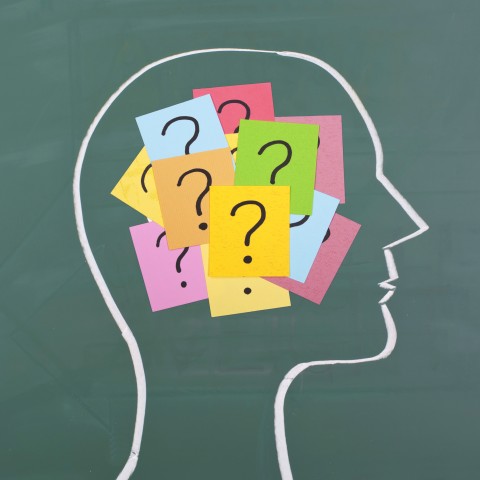
- → Try to think of easy sentences that you can use like this. This way, you can improve your own Dutch sentence structures and learn how to avoid this common mistake of Dutch-learners.
- → Are you struggling with Dutch sentence patterns? Then have a look at this useful list of the Top 10 Sentence Patterns for Beginners.
4. Common Dutch Grammar Errors
Grammar is a challenge in every language, and Dutch is no exception. Let’s learn from our mistakes!
7. Mixing up the dt ending
Although the Dutch present tense might look easy, be aware of one of the most common Dutch grammar mistakes: mixing up the dt ending.
So when should you use the dt ending? It has to be used with certain subjects when the verb used has a -d root ending.
Let’s take this mistake in Dutch grammar step-by-step:
How do you get the infinitive in Dutch? Well, Dutch infinitives are the plural and present tense verbs. They usually end with -en, as in lopen (“to walk”). Sometimes, they end with only -n, as in zijn (“to be”).
Before the Dutch infinitive, you can almost always put Ik kan (“I can”):
- Ik kan fietsen.
“I can cycle.”
Or:
- Ik kan antwoorden.
“I can answer.”
So how do you get the root of your verb? You simply remove the -en ending. So in this case, fiets is the root of fietsen and antwoord of antwoorden.
| Subject | Fietsen present tense (“to cycle”) | Antwoorden present tense (“to reply”) |
| Ik (“I”) | fiets | antwoord |
| Jij, u (“You”) | fietst | antwoordt |
| Hij, zij, het (“He, she, it”) | fietst | antwoordt |
| Wij (“We”) | fietsen | antwoorden |
| Zij (“They”) | fietsen | antwoorden |
As you can see, in the verb antwoorden, because the root ends with a -d, it becomes -dt for the “you” and “he, she, it” subjects. So when in doubt, look at the conjugation of a verb that doesn’t end with a -d (such as fietsen), and you’ll know what to do.
8. Making words plural with an -s instead of -en
English and Dutch have many similarities. Just like English, Dutch makes words plural by changing that word’s ending. However, avoid the common mistake in Dutch of making plural words with an -s instead of -en.
There are some cases where we can add an -s, but most of the time, we add -en.
| Singular | Plural |
| Kat (“Cat”) | Katten (“Cats”) |
| Kus (“Kiss”) | Kussen (“Kisses”) |
| Stoel (“Chair”) | Stoelen (“Chairs”) |
| Bord (“Plate”) | Borden (“Plates”) |
| Banaan (“Banana”) | Bananen (“Bananas”) |
5. A Special Dutch Mistake

Every culture has its own peculiarities. So what’s a Dutch-learning mistake that’s closely connected to Dutch culture?
9. Switching to English every time you struggle speaking Dutch
This may not be a grammar or vocabulary blunder, but it’s a common mistake in learning Dutch.
Many Dutch people speak English very well, so it might be tempting to switch from Dutch to English every time you start to struggle. Try not to do that too much, as you’ll only master Dutch if you really practice the language.
This impulse to switch to English may not even come from you, as the Dutch are always happy to speak English. When they see you struggle, or even notice the littlest hint of an accent, they’ll try to “help” you by suggesting you switch to English. So it can definitely be called a typical cultural challenge that Dutch-learners face.
Instead of switching, just try to explain that you’re practicing their beautiful language. They’ll be patient, and maybe even flattered that you’re trying to speak their language (as a lot of foreigners don’t even bother).
6. The Biggest Mistake in Dutch Language-Learning
Last, but definitely not least, try to avoid the biggest mistake: mixing up de and het.
10. “The” in Dutch: het vs. de
Mixing up articles: this is seen as the most common and most typical mistake of Dutch-learners.
In Dutch, there are two options for “the”: de and het. It’s very common to hear Dutch-learners mix them up, and for a good reason: the Dutch language lacks a clear explanation of which one to use in what situations. In theory, all masculine and feminine words get de, while all neuter words get het:
- De vrouw (“The woman”)
- De man (“The man”)
- Het kind (“The child” – is neuter)
However, in practice, this won’t help you that much as there’s not always a good explanation as to why a word is feminine, masculine, or neuter. Dutch words don’t have a clear gender indication.
Luckily, there are a few indications that can help you:
- All words referring to people are de-words (de voetballer [“the football player”] / de president [“the president”]).
- All plural words get de (de katten [“the cats”] / de stoelen [“the chairs”]).
- All words made smaller with (e)(t/d)je are neuter (het kindje [“the little child”] / het bloemetje [“the little flower”]).
- Words ending with -el or -er are often de-words (de tafel [“the table”] / de bakker [“the baker”]).
- All infinitive verbs that are used as a noun have the neuter het (het fietsen [“the cycling”] / het schrijven [“the writing”]).
- Words with standard prefixes like ge-, ver-, ont-, and be-, and without an -ing ending, are neuter (het verhaal [“the story”] / het ontslag [“the resignation”]).
- Almost all words with the standard suffixes -ing, -ij, -ie, -e, and -heid are feminine (de politie [“the police”] / de schoonheid [“the beauty”] / de drukkerij [“the printing company”] /, de dame [“the lady”]).
Practice is key. When in doubt, look up the word in the dictionary (it will say [m], [v], or [o] behind the word). This way, you’ll learn the combinations, and with time, you’ll develop the instinct of when to use de and when to use het.
In the meantime, remember that it’s okay to make mistakes in Dutch, because it means that you’re learning.
- → Would you like to improve your Dutch? Get active and boost your Dutch studies with our list of the Top 10 Language-Learning Strategies.

7. How DutchPod101 Can Help You Learn More Dutch
In this guide, you’ve learned all about the ten most common mistakes in Dutch. You know what to do and what not to do. We’ve made you aware of the most common mistakes and gave you some hints on how to avoid them.
Yes, you’re bound to make mistakes in Dutch, but this guide has given you some tools to recognize them. From the common pronunciation mistakes for Dutch-learners, vocabulary word mistakes, and word order mistakes, to the “biggest mistake of all.”
So are you already feeling more confident about your Dutch? Which one of the mistakes do you make the most and how can you avoid it in the future?
Start avoiding these mistakes today with the help of DutchPod101.com. Boost your studies with our useful vocabulary lists with audio recordings and other free resources.
Would you like some personal one-on-one coaching? Check out our premium MyTeacher service. We’ll connect you with a private teacher who will help you improve your Dutch through interactive exercises and personalized feedback.
Practice Dutch and learn from your mistakes with DutchPod101!

The 10 Most Common Questions in Dutch & How to Answer

Are you in the Netherlands, wanting to get to know some nice Dutch people, but you don’t know how? Making friends and getting to know people can be hard, especially when you’re in another country. Luckily, there’s an easy way to break the ice: asking questions in Dutch. This is a great way to start conversations—and keep them going.
Through asking questions, you’ll get to know your conversation partner, get personal, and maybe even become friends. And you’ll be able to practice your Dutch listening and speaking skills at the same time!
In this guide, you’ll learn everything about asking questions in Dutch, from the Dutch question words to making yes/no questions. We’ll also introduce you to the ten most common Dutch questions and the different answers you can give. By the end of this article, you’ll not only know how to make questions in Dutch, but also how to answer them!
 Table of Contents
Table of Contents
- The Golden Rules of Dutch Questions
- The 10 Most Common Dutch Questions
- How DutchPod101 Can Help You Learn More Dutch
1. The Golden Rules of Dutch Questions
Before we go to our list of the ten most common Dutch questions, there are some basics you need to understand concerning how to make those questions in Dutch.
A- Questions Beginning with Dutch Question Words
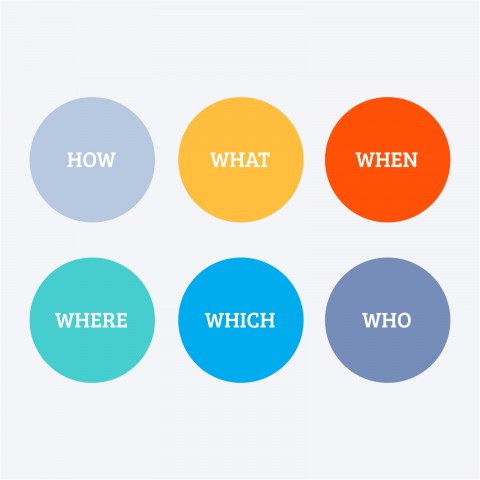
How? What? Why? Where? Who? When?
You know the English ones, so let’s learn more about question words in Dutch!
There’s a special Dutch question structure for questions that use interrogative words at the beginning. The question word comes first, the conjugated verb second, and the subject third:
Question word + Verb + Subject
Let’s have a look at two simple examples:
- Waarom lach je? (“Why do you laugh?”)
- Wanneer trouwt je zoon? (“When does your son get married?”)
Now have a look at more Dutch question words:
| Hoe (“How”) | Hoe voel je je? (“How are you feeling?”) |
| Wat (“What”) | Wat doe je morgen? (“What are you doing tomorrow?”) |
| Waarom (“Why”) | Waarom is je vriendin boos? (“Why is your girlfriend mad?”) |
| Waar (“Where”) | Waar ligt Den Bosch? (“Where is Den Bosch?”) |
| Wie (“Who”) | Wie ben jij?(“Who are you?”) |
| Wanneer (“When”) | Wanneer is zijn verjaardag? (“When is his birthday?”) |
B- Yes/No Questions
Another common question form Dutch people use is the yes/no question; as you know, these are questions that can be answered with a “yes” or a “no.” Questions like this have a different word order, with the verb coming first:
Verb + Subject
For example:
- Kom je? (“Are you coming?”)
- Werkt hij? (“Does he work?”)
As you can see here, the subject and verb are inverted to create yes/no questions.
Remember that when jij or je (“you”) follows the verb, the -t at the end of the verb is dropped:
- Ga je morgen naar school? (“Are you going to school tomorrow?”)
- Instead of: Je gaat morgen naar school. (“You are going to school tomorrow.”)
- Heb je vandaag met je oma gepraat? (“Did you talk to your grandmother today?”)
- Instead of: Je hebt vandaag met je oma gepraat. (“You talked with your grandmother today.”)
- → For more Dutch question examples, don’t forget to have a look at our list of the top 25 questions you need to know on DutchPod101.com.
2. The 10 Most Common Dutch Questions
Now that you know the golden rules of forming basic Dutch questions, it’s time to dive into the ten most common questions in Dutch.

1. How are you?
This basic Dutch question is the most common way to start talking to someone, whether you’ve met before or not.
However, be aware that in the Netherlands, this question isn’t just a formality. In some cultures (such as Spanish or French), someone can ask this question without really expecting a comprehensive answer. This is not so much the case in the Netherlands. When the Dutch ask this question, they’re usually interested in the answer. Of course, your answer may be more or less detailed depending on how well you know the other person.
How are you?
- Hoe gaat het met je? [Casual]
- Hoe gaat het met u? [Formal]
Another informal way to ask this question is: Alles goed? (“Everything fine?”)
Possible answers for this question include:
- ► Het gaat goed met me. (“I am doing great.”)
► Ik voel me niet goed. (“I am not feeling well.”)
► Het gaat wel. (“I am fine.”)
► Ik heb het erg druk. (“I am very busy.”)
As you can see, we used the question word hoe (“how”), followed by the conjugated verb.
As you go through the rest of this article, ask yourself which structure each question uses: the one with a question word at the beginning or the yes/no structure.
2. What are you doing?
If you know someone well and want to know what they’re up to, this question is perfect.
However, it’s not the way to go when talking with strangers, as this random Dutch question can seem quite invasive (especially with the sometimes distant Dutch people).
What are you doing?
- Wat doe je? [Casual]
- Wat doet u? [Formal]
Let’s see some possible answers:
- ► Ik lees. (“I am reading.”)
► Ik kijk een film. (“I am watching a movie.”)
► Ik ben aan het studeren. (“I am studying.”)
► Ik ben aan het koken. (“I am cooking.”)
In the ik ben aan het + verb structure, you can replace the verb (studeren or koken) with the verb that’s applicable to your situation.
- → Would you like to learn some more verbs? Have a look at these 50 most common verbs.
3. What’s your name?

Are you meeting someone new in the Netherlands? Then it’s crucial to be able to ask for their name. This is also a great ice-breaker, as it shows your interest in that person. And once the conversation’s been started, there will be plenty more questions to come!
What’s your name?
- Wat is je naam? [Casual]
- Wat is uw naam? [Formal]
Another way to ask this question in Dutch is:
- Hoe heet je? [Casual]
- Hoe heet u? [Formal]
Let’s now have a look at the answers:
- ► Ik heet Sophie. (“My name is Sophie.”)
► Mijn naam is Sophie. (“My name is Sophie.”)
► Ik ben Sophie. (“I am Sophie.”)
4. Where are you from?
As a foreigner in the Netherlands, you’ll often hear this question. By learning how to ask this question in Dutch, you’ll have the perfect way to stimulate a conversation. While you can ask this to a foreigner, asking this to a Dutch person may help them open up about their hometown or the region they’re from.
Where are you from?
- Waar kom je vandaan? [Casual]
- Waar komt u vandaan? [Formal]
Let’s have a look at some possible answers:
- Foreign answers
► Ik ben Duits. (“I’m German.”)
► Ik kom uit Frankrijk. (“I’m from France.”)
Local answers
► Ik kom uit Amsterdam. (“I’m from Amsterdam.”)
► Ik ben een Rotterdammer. (“I’m a Rotterdammer.” – a person from Rotterdam)
► Ik kom uit Brabant. (“I’m from Brabant.”)
Has your interlocutor given you the name of a place you’re not familiar with? Then you can ask this:
Where is it?
- Waar is dat?
- Waar ligt dat?
- ► In het Zuiden van Nederland. (“In the south of the Netherlands.”)
► Vlakbij Den Haag. (“Close to The Hague.”)
► Het is een stad in Noord-Italië. (“It is a city in northern Italy.”)

- → Have a look at the Dutch name of your country. Can’t find your country on this list? Then check out this extensive list of country names in Dutch.
5. Where do you live?
It’s nice to know where someone is from, but it may be more useful to know where someone is living. Let’s have a look at this common Dutch question:
Where do you live?
- Waar woon je? [Casual]
- Waar woont u? [Formal]
► Ik woon in Breda. (“I live in Breda.”)
► Ik woon in de provincie Groningen. (“I live in the province of Groningen.”)
- → Do you live in the Netherlands, but still struggle with the pronunciation of city names? Then have a look at our major Dutch cities list with audio recordings.
6. Have you been to [place]?
You’ve just told someone where you’re from or where you live. Let’s keep that conversation going and ask if they’ve ever been to that place. This way, you’ll show your interest and get to know more about someone’s (traveling) past.
Have you been to [place]?
- Bent u in [place] geweest? [Casual]
- Ben je in [place] geweest? [Formal]
- → As you can see, this is a yes/no question that starts with the verb, followed by the subject.
Other ways to ask this question are:
- Ben je ooit in Brussel geweest? (“Have you ever been to Brussel?”)
- Heb je door Zuid-Amerika gereisd? (“Have you traveled through South America?”)
Possible answers include:
- ► Ja, ik ken [place] erg goed. (“Yes, I know [place] very well.”)
► Ja, ik ben er vorig jaar nog geweest. (“Yes, I went there last year.”)
► Ik ben er heel lang geleden geweest. (“I was there a long time ago.”)
► Nee, ik ben daar nog nooit geweest. (“No, I’ve never been there.”)
7. Do you speak Dutch?

The language question: another crucial Dutch question for any foreigner in the Netherlands. You’ll receive this question a lot yourself, but learning this structure will be useful for you too. You never know when you’ll need to communicate in your native language or a different common language.
Do you speak Dutch?
- Spreek je Nederlands? (“Do you speak Dutch?”) – Casual
- Spreekt u Nederlands? (“Do you speak Dutch?”) – Formal
- Spreek je Engels? (“Do you speak English?”) – Casual
- Spreekt u Engels? (“Do you speak English?”) – Formal
Let’s have a look at some possible answers:
- ► Ik spreek een beetje Nederland. (“I speak a little Dutch.”)
► Ik spreek vloeiend Engels. (“I speak English fluently.”)
► Min of meer. (“So-so.”)
8. What do you do?

You know how your new acquaintance is doing, you know their name, and you know where they’re from and where they live. You even know the languages they speak. What’s left to ask? A logical followup question is to ask about someone’s work or study.
What do you do?
- Wat doe je? [Casual]
- Wat doet u? [Formal]
If you’re in a bar and you just say Wat doe je? the other person could be caught off guard by this random Dutch question, and answer “I am drinking a beer, why?” So when you ask this question out of nowhere, it may be better to be a bit more specific:
- Wat voor werk doe je? (“What kind of work do you do?”)
- Wat is jouw baan? (“What’s your job?”)
- Waar werk je? (“Where do you work?”)
- Wat voor een studie doe je? (“What kind of study do you do?”)
- Wat studeer je? (“What do you study?”)
- Waar studeer je? (“Where do you study?”)
- → The questions from this point on are in the casual, more common Jij/Je form, but you could make them more formal by using U or Uw.
- → Would you like to learn when to use the formal or casual form in Dutch? Start by finding out what to say when you do business in the Netherlands.
Some possible answers are:
- ► Ik ben politieagent. (“I’m a police officer.”)
► Ik werk in IT. (“I work in IT.”)
► Ik werk in een kledingwinkel. (“I work in a clothing store.”)
► Ik studeer anthropologie. (“I study anthropology.”)
► Ik studeer aan de Universiteit van Amsterdam. (“I study at the University of Amsterdam.”)
- → Not sure how to talk about your job in Dutch? Have a look at our free vocabulary list on Jobs.
9. What are your hobbies?
For the Dutch, their work is important. But many believe that their hobbies and interests define them more than their work. So a great way to show your interest in the other person and find common ground is to ask them about their hobbies.
What are your hobbies?
- Wat zijn je hobby’s?
- Wat doe je graag in je vrije tijd? (“What do you do in your free time?”)
► Ik ga graag naar de bioscoop. (“I like going to the cinema.”)
► Ik hou van wandelen. (“I love hiking.”)
► Ik maak foto’s. (“I take pictures.”)
- → Find your favorite hobbies in our free vocabulary list with audio recordings to practice your pronunciation.
10. Do you like ___?

Let’s get personal and find out what our Dutch acquaintance here likes or dislikes. There’s no better way to get to know someone!
The Dutch are quite direct, and you can usually say whatever you’re thinking. However, try to stay respectful toward your host country. The Dutch don’t mind a bit of criticism, but don’t be too negative or you might hurt their feelings.
Do you like ___?
- Houd je van winkelen? (“Do you like to shop?”)
- Literally, it says “to love,” but in this instance, it’s more similar to the English “to like.”
- Houd je van de Nederlandse keuken? (“Do you like Dutch cuisine?”)
- Houd je van bier? (“Do you like beer?”)
And possible answers:
- ► Ja, ik houd ervan! (“Yes, I love it!”)
► Nee, ik vind het niet echt leuk. (“No, I don’t really like it.”)
► Nee, ik haat het. (“No, I hate it.”)
► Het ligt eraan. (“It depends.”)
- This answer is vague enough to keep yourself out of trouble!
Some other ways to ask this question:
- Vind je Nederland leuk? (“Do you like the Netherlands?”)
- Vind je je werk leuk? (“Do you like your work?”)
- Heb je het naar je zin in Amsterdam? (“Do you enjoy Amsterdam?”)
► Ja, ik houd van Amsterdam. (“Yes, I love Amsterdam.”)
► Ja, maar het is wel erg druk. (“Yes, but it’s quite busy.”)
► Het gaat wel. (“It’s fine.”)
► Nee, ik vind het niet leuk. (“No, I do not like it.”)
3. How DutchPod101 Can Help You Learn More Dutch
In this guide, you’ve learned how to make questions in Dutch, with plenty of example answers to keep that conversation going. You now have the tools to make conversation with your soon-to-be new Dutch friends.
So are you ready to put this useful knowledge into action? Do you feel ready to start asking basic Dutch questions using everything you’ve learned today?
You can start using and practicing these questions with the help of DutchPod101. Boost your studies with our useful vocabulary lists with audio recordings and other free resources.
Would you like to practice with your own private teacher? Then make use of our premium MyTeacher service and get personal one-on-one coaching. Through interactive exercises, pronunciation advice, and personalized feedback, you’ll really master those Dutch questions!
Start asking questions in Dutch (and getting answers) with DutchPod101!

Your Complete Guide to the NT2 Dutch Exam

Would you like to take an official Dutch language proficiency test? If that’s the case, wouldn’t you love to receive some handy tips and tricks to make sure you pass? If so, this guide will definitely come in handy.
In the Netherlands, there are two official language proficiency tests: the NT2 Dutch as a Second Language State Exam (Staatsexamen NT2) and the Certificate Dutch as a Foreign Language (Certificaat Nederlands als Vreemde Taal, CNaVT). In this guide, we’ll only focus on the NT2 Dutch State Exam, as it’s the most common one they ask for when you’re looking for a job or applying for a university or school in the Netherlands.
We’ll go over everything you need to know about the NT2 Dutch language proficiency exam: what it is, how to sign up, and why you should care. We’ll also give you some insight into the different language levels and how they relate to the NT2 Dutch exam.
Finally, we’ll dive into the structure and content of all four sections of the exam, and provide you with some tips on how to practice for and master this most important Dutch test.

 Table of Contents
Table of Contents
- What is the NT2 Dutch as a Second Language State Exam?
- A Test for Two Levels
- How to Succeed on the NT2 Dutch State Exam
- How DutchPod101 Can Help You Learn More Dutch
1. What is the NT2 Dutch as a Second Language State Exam?

The NT2 Dutch as a Second Language State Exam is the national Dutch proficiency exam for non-native adult speakers who want to work or study in the Netherlands. The diploma received after passing this test is officially recognized by the Dutch government. You can find more details about the exam right here.
1- Why Take the Exam?
There are many possible reasons why you’d want to pass the NT2 Dutch exam:
- To study at a Dutch school or university
- To find a job in the Netherlands
- To apply for a Dutch residence permit
- To request a Dutch citizenship
- → The Diploma of the NT2 Dutch State Exam meets the Dutch language requirements for integration: Inburgering (“Integration”) and Naturalisatie (“Naturalization”).
You can only take this Dutch language exam in the Netherlands.
- → Would you like to do a test just “for fun” or to discover your level? In that case, the NT2 Dutch State Exam might be too much trouble, and it would be better to take a different Dutch test.
2- What Does the Exam Look Like?
The exam has four sections:
1. Lezen (“Reading”)
2. Schrijven (“Writing”)
3. Spreken (“Speaking”)
4. Luisteren (“Listening”)
The tests are all computer-based. To obtain the diploma, you need to pass all four sections.
- → What happens if you fail one of the sections? It’s possible to re-do any of the four parts, but you won’t be able to apply for your diploma until you receive all four certificates.

3- NT2 Exam Registration
You can register for the exams via the DUO departmental website. The examinations are held several times a year at seven different locations in the Netherlands:
- Amsterdam
- Eindhoven
- Amersfoort (only on predetermined Saturdays)
- Oisterwijk
- Rotterdam
- Rijswijk
- Zwolle
To be able to participate, you’ll need to have a valid ID.
How much does it cost? The NT2 Dutch exam costs €45,00 per language skill. So for all four sections, it will cost you a total of €180,00.
2. A Test for Two Levels
1- The different levels of the NT2 Dutch State Exam
There are two NT2 exam levels that you can choose to take:
- The NT2 program I – This exam is meant for people who want to work or study on a vocational education level (MBO). This is considered a Dutch B1 exam according to CEFR.
- The NT2 program II – This exam is intended for people who want to study or work on a hogeschool (“higher education,” HBO) or university level (WO). The language level of this program is B2 (CEFR).
2- Common European Framework of Reference for Languages (CEFR)
Before you can choose the best test for your level, you need to be familiar with the CEFR system (Common European Framework of Reference for Languages). This classification shows your proficiency level in a foreign language on a six-point scale, from A1 for beginners to C2 for those who have mastered a language.
| Level | Description | You can: |
| A1 | Beginner |
|
| A2 | Lower-Intermediate |
|
| B1 Level of the NT2 program I | Intermediate |
|
| B2 Level of the NT2 program II | Upper-Intermediate |
|
| C1 | Advanced |
|
| C2 | Proficient |
|
3. How to Succeed on the NT2 Dutch State Exam
1- The Writing Test
Duration: 100 minutes
A- The Test
The Dutch writing exam (Program I and Program II) consists of completing sentences, as well as writing both short and medium texts. You can decide what order you want to do the assignments in.
- Write sentences – You must complete sentences or finish them.
- Write short text – This could be a note, a short letter, or a short description of a situation.
- Write medium text – This could be a description of a problem and a proposal for a solution. You may receive a table, graph, or images that you must use.
Most assignments are about work or education. A number of assignments are about daily life topics.
| Program I | Program II |
| Write 10 sentences | Write 7-8 sentences |
| Complete 2 short texts | Write 1-2 short texts |
| Write 2 short texts | Write 1-2 medium texts |
B- Tips on How to Practice for the Test
- ► Improve your grammar and vocabulary, and get familiar with the most common structures of Dutch texts by reading a lot. This way, you’ll get used to different Dutch writing styles, learn useful vocabulary, and discover connecting phrases.
► Write, write, and write even more. For the best results, try to get personal feedback from a native Dutch speaker. For example, this can be your own private DutchPod101 teacher, through our MyTeacher services.
► Take an old NT2 Dutch test and practice writing texts within a short period of time. Or study NT2 Dutch test reviews.
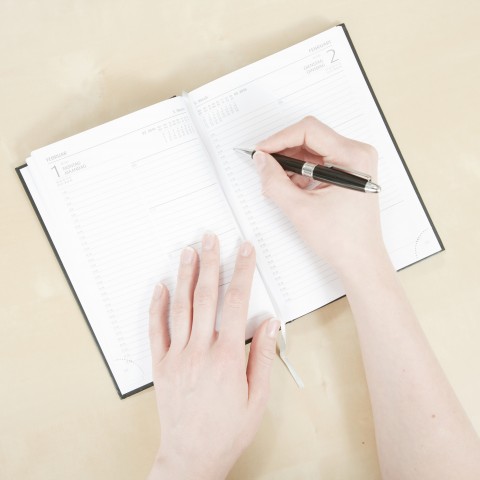
C- Tips on How to Take the Test
- ► First, read the Dutch test instructions very carefully to understand them fully.
► Remember that you’ll probably not be asked for your opinion, and will sometimes be asked to take a stand following some specific guidelines. Follow these guidelines and write accordingly.
► Adapt your text for the target audience. The style, writing, and structure must match the type of text that you’re writing.
► Make a quick outline of your text before you begin writing. This way, you can write a better-organized text.
► Re-read your text several times, focusing on grammar, conjugation, and punctuation.
► Use a dictionary, it’s allowed! You may use a maximum of three dictionaries during the writing exam (except for the Van Dale Synonyms dictionary, the Van Dale Proverb dictionary, a digital dictionary, or a digital spell checker). Your dictionaries should not contain any notes.
2- The Speaking Test
Duration: around 25 minutes
A- The Test
For this Dutch speaking exam, you’ll wear headphones and speak through your microphone to the computer. You’ll read the commands and answers on the computer screen. The Program I exam consists of two parts; The Program II exam consists of three parts. There are both short and long speaking assignments:
- Short speaking assignment – You’ll receive questions, to which you’ll give a short answer. You’ll have twenty seconds to speak per assignment.
- Medium-length speaking assignment – You’ll receive questions, to which you’ll have to give a longer answer (a few sentences or more). You’ll have thirty seconds to speak per assignment.
- Long speaking assignment – You’ll speak for two minutes on a specific topic, and will receive preparation time for this.
| Program I | Program II | |
| Part 1 | 8 short speaking assignments | 4 short speaking assignments |
| Part 2 | 8 medium speaking assignments | 8 medium speaking assignments |
| Part 3 | – | 1 long speaking assignment |
- → You can’t use a dictionary for the speaking test!
B- Tips on How to Practice for the Test
- ► Take some old NT2 tests and practice the short, medium, and (if you plan on taking the Program II) long speaking assignments. This is the best way to get familiar with the “real” test conditions.
► Practice your speaking skills with Dutch natives as often as you can. Practice with your Dutch friends or colleagues. Don’t have any yet? Talking to strangers also helps a lot; it gets you out of your comfort zone and exposes you to different ways of speaking.
► Don’t have any natives around to talk with? Try to practice with other Dutch learners, or even alone. If practicing alone, record yourself and try to correct your own mistakes.
- ► Would you like to improve your pronunciation? Then have a look at Our Ultimate Dutch Pronunciation Guide.
- ► Are you just learning Dutch? Have a look at this page on Conversational Dutch for Absolute Beginners.
- ► Use MyTeacher and send your recordings to your private teacher. He or she will give you some great feedback on your grammar and pronunciation!

C- Tips on How to Do the Test
- ► Read the Dutch test instructions carefully, as many times as necessary to understand them perfectly.
► Try to use examples to illustrate your ideas or opinions. You can use examples from your own experiences, current events, or texts that you’ve read.
► Try to articulate your thoughts clearly, and don’t scatter your ideas too much.
3- The Reading Test
Duration: 110 minutes in Program I and 100 minutes in Program II
A- The Test
For the Dutch reading exam, you’ll receive a booklet containing texts. The questions and answer options are on the computer. For the seven texts, you must answer 35-38 multiple-choice questions.
There are different types of assignments:
- There are assignments where you have to choose the subject of the text, the source, or the audience.
- There are assignments where you have to choose the meaning of a text, the relationship between two pieces of text, or the conclusion of the text.
- There are questions where you need to look something up in the text.
B- Tips on How to Practice for the Test
- ► Practice by reading a wide variety of materials, from newspaper articles, books, and essays to short stories.
► Practice the reading test from a past NT2 Dutch test. This way, you’ll get a good idea of what to expect in terms of length and difficulty. You can also have a look at NT2 Dutch test reviews.
- ► Are you still a Dutch language beginner? Then have a look at this Extensive Reading in Dutch for Absolute Beginners page or this Reading Comprehension for Absolute Beginners page.
C- Tips on How to Do the Test
- ► Read the text carefully before you read the questions. This way, you won’t be biased and you’ll be able to better understand the text.
- ► Then, read the Dutch test instructions and questions attentively and make sure you understand them perfectly. After that, you can read the text one more time in this new light.
► Stay alert and prepare yourself for word play and traps.
- ► You can use up to three dictionaries for the reading test, as long as they are free of any notes. You can’t use the Van Dale Synonyms dictionary, the Van Dale Proverb dictionary, a digital dictionary, or a digital spell checker.
4- The Listening Test
Duration: 90 minutes
A- The Test
The Dutch listening exam consists of about 40 different assignments. There are five or more audio texts and 1-3 videos, each with questions. All questions are multiple-choice.
You’ll hear speakers talk about daily life situations, in addition to recordings of “normal life conversations.” These will feature different voices, repetitions, accents, and noises in the background.
For each question, you get twenty-five seconds to read the question and the three possible answers.
You can’t use a dictionary for the listening test.
B- Tips on How to Practice for the Test
- ► Listen to Dutch radio or watch Dutch TV, movies, or series every day. A Dutch podcast may also be useful.
- ► Do you have some Dutch native speakers close by? Listen to them speak by asking them many questions.
► Any listening exercise on DutchPod101.com can be a great way to practice your listening skills. We also have a page on Listening Comprehension for Absolute Beginners.
- ► Practice an NT2 test with listening assignments; this way, you’ll know what to expect. You can find old NT2 Dutch State Exams on the official website, where you can also have a look at their recommended study materials.

C- Tips on How to Do the Test
- ► Read the test instructions attentively.
- ► Make the best of the short time you’re given to read the questions.
► Stay alert and don’t jump to conclusions too fast—appearances may be deceiving. Don’t choose your answer until you’ve heard the entire text.
4. How DutchPod101 Can Help You Learn More Dutch
In this guide, you’ve learned everything you need to know about the NT2 Dutch State Exam. We’ve shown you some useful information on the structure and the different levels of the test. You’ve also received some useful tips on the writing, speaking, reading, and listening sections of this Dutch language proficiency test.
Do you feel ready to start practicing for the NT2 Dutch Exam? A good exercise is to practice an official NT2 test, from the beginning to the end. It will take some time, but it’s the only way to learn what to expect.
Would you like to practice your Dutch? DutchPod101.com has many free resources, such as vocabulary lists with audio recordings which are great for practicing your listening and speaking skills.
Or do you prefer some private teaching? DutchPod101 also offers personal one-on-one coaching with our premium MyTeacher service. Through interactive exercises, personalized feedback, and useful tips, you can really master this Dutch language proficiency test!

Dutch Keyboard: How to Install and Type in Dutch

You asked, so we provided—easy-to-follow instructions on how to set up your electronic devices to write in Dutch! We’ll also give you a few excellent tips on how to use this keyboard, as well as some online and app alternatives if you prefer not to set up a Dutch keyboard.
 Table of Contents
Table of Contents- Why it’s Important to Learn to Type in Dutch
- Setting up Your Computer and Mobile Devices for Dutch
- How to Activate an Onscreen Keyboard on Your Computer
- How to Change the Language Settings to Dutch on Your Computer
- Activating the Dutch Keyboard on Your Mobile Phone and Tablet
- Dutch Keyboard Typing Tips
- How to Practice Typing Dutch
1. Why it’s Important to Learn to Type in Dutch

Learning a new language is made so much easier when you’re able to read and write/type it. This way, you will:
- Get the most out of any dictionary and Dutch language apps on your devices
- Expand your ability to find Dutch websites and use the various search engines
- Be able to communicate much better online with your Dutch teachers and friends, and look super cool in the process!
2. Setting up Your Computer and Mobile Devices for Dutch
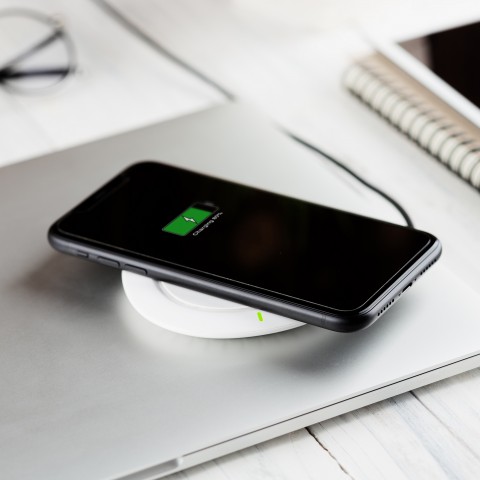
It takes only a few steps to set up any of your devices to read and type in Dutch. It’s super-easy on your mobile phone and tablet, and a simple process on your computer.
On your computer, you’ll first activate the onscreen keyboard to work with. You’ll only be using your mouse or touchpad/pointer for this keyboard. Then, you’ll need to change the language setting to Dutch, so all text will appear in Dutch. You could also opt to use online keyboards instead. Read on for the links!
On your mobile devices, it’s even easier—you only have to change the keyboard. We also provide a few alternatives in the form of online keyboards and downloadable apps.
3. How to Activate an Onscreen Keyboard on Your Computer
1- Mac
1. Go to System Preferences > Keyboard.
2. Check the option “Show Keyboard & Character Viewers in Menu Bar.”
3. You’ll see a new icon on the right side of the main bar; click on it and select “Show Keyboard Viewer.”

2- Windows
1. Go to Start > Settings > Easy Access > Keyboard.
2. Turn on the option for “Onscreen Keyboard.”
3- Online Keyboards
If you don’t want to activate your computer’s onscreen keyboard, you also have the option to use online keyboards. Here are some good options:
4- Add-ons of Extensions for Browsers
Instead of an online keyboard, you could also choose to download a Google extension to your browser for a language input tool. The Google Input Tools extension allows users to use input tools in Chrome web pages, for example.
4. How to Change the Language Settings to Dutch on Your Computer

Now that you’re all set to work with an onscreen keyboard on your computer, it’s time to download the Dutch language pack for your operating system of choice:
- Windows 8 (and higher)
- Windows 7
- Mac (OS X and higher)
1- Windows 8 (and higher)
1. Go to Settings > Change PC Settings > Time & Language > Region & Language.
2. Click on “Add a Language” and select “Dutch.” This will add it to your list of languages. It will appear as Dutch with the note “language pack available.”
3. Click on “Dutch” > “Options” > “Download.” It’ll take a few minutes to download and install the language pack.
4. As a keyboard layout, you’ll only need the one marked as “Dutch.” You can ignore other keyboard layouts.
2- Windows 7
1. Go to Start > Control Panel > Clock, Language, and Region.
2. On the “Region and Language” option, click on “Change Keyboards or Other Input Methods.”
3. On the “Keyboards and Languages” tab, click on “Change Keyboards” > “Add” > “Dutch.”
4. Expand the option of “Dutch” and then expand the option “Keyboard.” Select the keyboard layout marked as “Dutch.” You can ignore other keyboard layouts. Click “OK” and then “Apply.”
3- Mac (OS X and higher)
If you can’t see the language listed, please make sure to select the right option from System Preferences > Language and Region
1. From the Apple Menu (top left corner of the screen) go to System Preferences > Keyboard.
2. Click the Input Sources tab and a list of available keyboards and input methods will appear.
3. Click on the plus button, select “Dutch,” and add the “Dutch” keyboard (not the “Belgian” one).
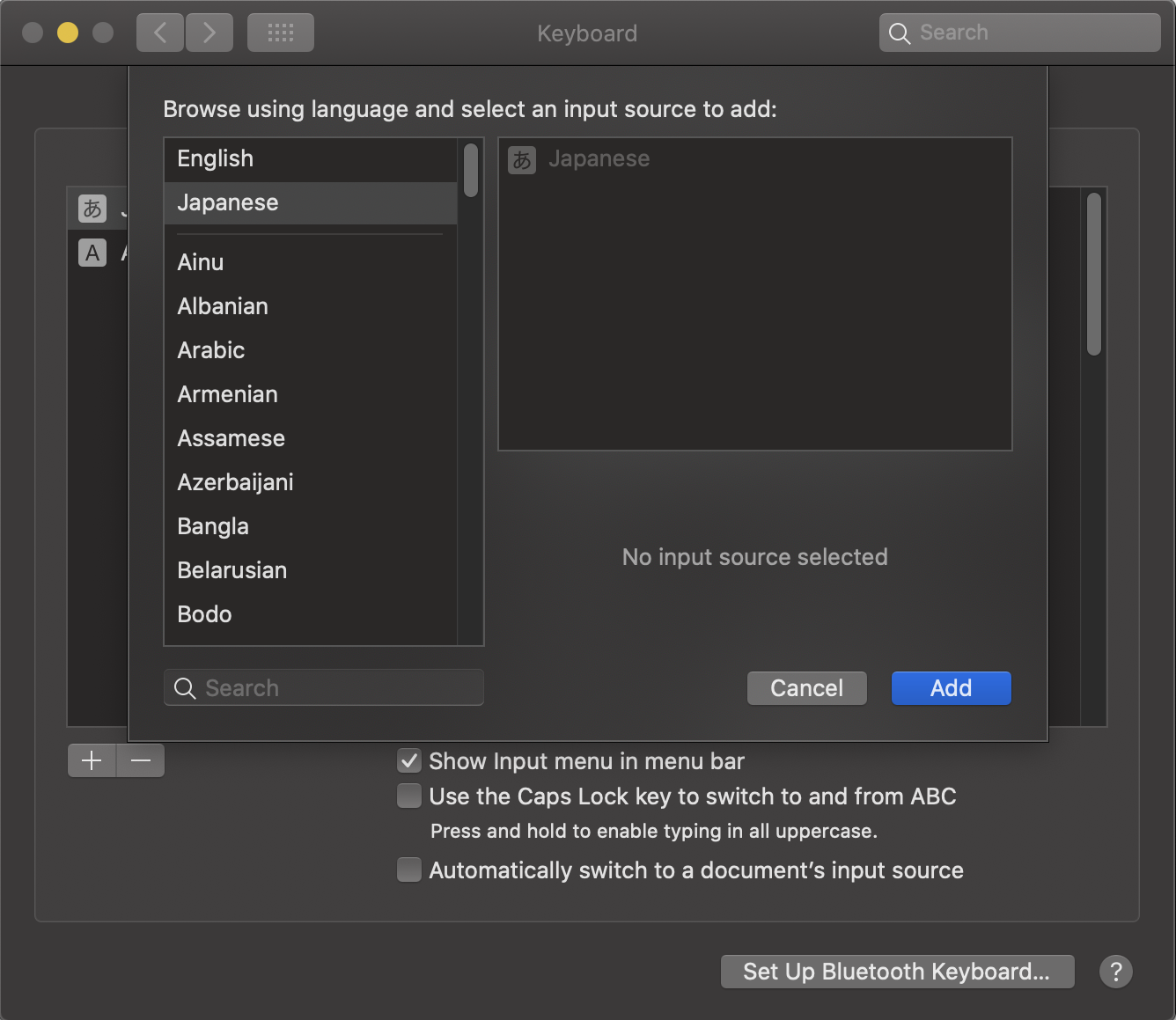
5. Activating the Dutch Keyboard on Your Mobile Phone and Tablet
Texting and searching in Dutch will greatly help you master the language! Adding a Dutch keyboard on your mobile phone and/or tablet is super-easy.
You could also opt to download an app instead of adding a keyboard. Read on for our suggestions.
Below are the instructions for both iOS and Android mobile phones and tablets.
1- iOS
1. Go to Settings > General > Keyboard.
2. Tap “Keyboards” and then “Add New Keyboard.”
3. Select “Dutch” from the list.
4. When typing, you can switch between languages by tapping and holding on the icon to reveal the keyboard language menu.
2- Android
1. Go to Settings > General Management > Language and Input > On-screen Keyboard (or “Virtual Keyboard” on some devices) > Samsung Keyboard.
2. Tap “Language and Types” or “ + Select Input Languages” depending on the device and then “MANAGE INPUT LANGUAGES” if available.
3. Select “Dutch” from the list.
4. When typing, you can switch between languages by swiping the space bar.
3- Applications for Mobile Phones
If you don’t want to add a keyboard on your mobile phone or tablet, these are a few good apps to consider:
6. Dutch Keyboard Typing Tips
Typing in Dutch can be very challenging at first! Therefore, we added here a few useful tips to make it easier to use your Dutch keyboard.

1- Computer
You can use Alt codes to enter specific characters. Here are some examples that are useful when using a Microsoft Windows device:
| Grave (capital letters) | À 0192 | È 0200 | Ì 0204 | Ò 0210 | Ù 0217 | — |
| Grave | à 0224 | è 0232 | ì 0236 | ò 0242 | ù 0249 | — |
| Acute (capital letters) | Á 0193 | É 0201 | Í 0205 | Ó 0211 | Ú 0218 | Ý 0221 |
| Acute | á 0225 | é 0233 | í 0237 | ó 0243 | ú 0250 | ý 0253 |
| Circumflex (capital letters) | Â 0194 | Ê 0202 | Î 0206 | Ô 0212 | Û 0219 | — |
| Circumflex | â 0226 | ê 0234 | î 0238 | ô 0244 | û 0251 | — |
| Tilde (capital letters) | Ã 0195 | — | — | Õ 0213 | — | — |
| Tilde | ã 0227 | — | — | õ 0245 | — | — |
| Umlaut (capital letters) | Ä 0196 | Ë 0203 | Ï 0207 | Ö 0214 | Ü 0220 | Ÿ 0159 |
| Umlaut | ä 0228 | ë 0235 | ï 0239 | ö 0246 | ü 0252 | ÿ 0255 |
When using a macOS, the Alt key changes into the Option key and the combinations change as well. For more information, check the Alt key page on Wikipedia.
2- Mobile Phones
On mobile devices, the process is much simpler. Just hold the vowel key and select the type of accentuation from the menu that pops up!
7. How to Practice Typing Dutch
As you probably know by now, learning Dutch is all about practice, practice, and more practice! Strengthen your Dutch typing skills by writing comments on any of our lesson pages, and our teacher will answer. If you’re a DutchPod101 Premium PLUS member, you can directly text our teacher via the My Teacher app—use your Dutch keyboard to do this!

Secret Revealed: The Best Way to Learn a Language on Your Own

Can You Really Learn Dutch Alone?
Learning a language on your own or without traditional classroom instruction may seem quite daunting at first. What if you run into questions? How do you stay motivated and on track to achieving goals?
Don’t worry, not only is it possible to learn Dutch or any language without traditional classroom instruction: DutchPod101 has created the world’s most advanced and extensive online language learning system. Not only is DutchPod101 specifically designed to help you with learning a language on your own, it’s actually faster, more convenient, and less expensive than traditional classroom options!
Let’s look at some of the benefits of learning Dutch or any language alone.

Also, don’t forget to download your free cheat sheet – How to Improve Your Language Skills too!
3 Reasons to Learn a Language Alone

1. Learn at Your Own Pace and On Your Schedule
In today’s fast-paced world, there just isn’t time for traditional classroom instruction. Between getting to class and studying on some professor or teacher’s schedule, traditional classroom learning is simply impossible to fit in. But when you learn Dutch alone, you can study in bed if you like and whenever suits your schedule best, making it far easier to actually reach your goal of learning and mastering the language.
2. Learning a Language on Your Own Reduces Stress and Anxiety
Speaking in front of a class, pop quizzes, and tests are just a few of the stressors you will encounter when you learn a language in a traditional classroom setting. Specifically, these are external stressors that often derail most people’s dream of learning a new language. But when you learn Dutch alone, there are no external stressors. Without the external stress and anxiety, it becomes much easier and more exciting to study Dutch and reach your very own goals—all on your own!
3. Learning Dutch Alone Helps Improve Cognitive Function and Overall Success
Learning a language on your own is indeed more challenging in some ways than being taught in a traditional classroom setting. In fact, while classroom instruction requires more rote memorization and following instructions, studying a language on your own requires more problem-solving and higher cognitive function to self-teach lessons and hit goals. So while it’s more challenging and requires higher levels of cognition, teaching yourself a language pays dividends throughout life by better preparing you for social/work opportunities that arise.
How to Learn a Language on Your Own with DutchPod101

1. Access to the World’s Largest Collection of Dutch Audio & Video Lessons
The best way to learn a language on your own is to study from native speaking instructors. Ideally, you want audio and/or video lessons that teach vocabulary, grammar, and provide actual Dutch conversations and dialogue to help you with pronunciation. DutchPod101 has hundreds of hours of HD audio and video lessons created by real Dutch instructors and every lesson is presented by professional Dutch actors for perfect pronunciation. Plus, all lessons can be accessed 24/7 via any mobile device with Internet access. And, if you download the PDF versions of each lesson, you can even study without Internet access once the lesson is stored on your device!
2. “Learning Paths” with Dutch Courses Based Upon Your Exact Needs & Goals
Although DutchPod101 has more than thousands of video and audio lessons, you need not review each and every one to learn the language. In fact, DutchPod101 has developed a feature called “Learning Paths”. You simply tell us your goals and we will identify the best courses and study plan to help you reach them in the shortest time possible. So even though you are technically learning a language on your own, our team is always here to help and make sure you reach your goals FAST!
3. Advanced Learning Tools Reduce Learning Time and Boost Retention
When you have the right tools and Dutch learning resources, it’s actually easy to teach yourself a language! In the past 10+ years, DutchPod101 has developed, tested, and refined more than 20 advanced learning tools to boost retention and reduce learning time, including:
- Spaced Repetition Flashcards
- Line-by-Line Dialogue Breakdown
- Review Quizzes
- Voice Recording Tools to Help Perfect Pronunciation
- Teacher Feedback and Comments for Each Lesson
- Dutch Dictionary with Pronunciation
- Free PDF Cheat Sheets
- And Much More!
Armed with our growing collection of advanced learning tools, it’s truly a breeze to learn Dutch alone and reach your goals!
Conclusion
Learning a language on your own is not only possible, it’s actually easier and more beneficial for you than traditional classroom instruction. In fact, when you learn Dutch on your own you can study at your own pace, eliminate stress, and actually increase cognitive function.
DutchPod101 is the world’s most advanced online language learning system and a great resource to help you teach yourself a new language. With the world’s largest collection of HD audio and video lessons, more than 20 advanced learning tools, and customized “Learning Paths”, DutchPod101 makes learning a new language easier, more convenient, and less expensive than traditional classroom instruction.
And the best part is: With DutchPod101, you can study in bed, your car, or wherever you have a few spare minutes of time. Create your Free Lifetime Account now and get a FREE ebook to help “kickstart” your dream of learning a language on your own below!

Language Learning Tips: How to Avoid Awkward Silences

Yes, even beginners can quickly learn conversational Dutch well enough to carry on real conversations with native speakers. Of course, beginners won’t be able to carry a conversation the same way they could in their native language. But, just knowing a few tips like which questions to ask to keep a conversation going are all you need to speak and interact with real native speakers! But before we get to specific suggestions, let’s first take a closer look at how having real Dutch conversations is so vital to your mastery of the language.
Learning to Carry a Conversation is Vital to Mastery of Any Language
Communicating with other people is the very point of language and conversation is almost second nature in our native tongue. For beginners or anyone learning a new language, conversations aren’t easy at all and even simple Dutch greetings can be intimidating and awkward.
However, there are 3 vital reasons why you should learn conversational Dutch as quickly as possible:
- Avoid Awkward Silences: Nothing kills a conversation faster than long periods of awkward silence, so you need practice and specific strategies to avoid them.
- Improve the Flow of Conversation to Make a Better Impression: When you know what to say to keep a conversation going, communication becomes much easier and you make a better impression on your listener.
- Master the Language Faster: Nothing will help you learn to speak Dutch faster and truly master the language than having real conversations with native speakers. Conversations quickly expose you to slang, cultural expressions, and vocabulary that force you to absorb and assimilate information faster than any educational setting—and that’s a great thing!
But how can you possibly have real conversations with real Dutch people if you are just starting out?
3 Conversation Strategies for Beginners
1. Ask Questions to Keep a Conversation Going
For beginners and even more advanced speakers, the key is to learn to ask questions to keep a conversation going. Of course, they can’t be just random questions or else you may confuse the listener. But, by memorizing a few key questions and the appropriate time to use them, you can easily carry a conversation with minimal vocabulary or experience. And remember, the more Dutch conversations you have, the quicker you will learn and master the language!
2. Learn Core Vocabulary Terms as Quickly as Possible
You don’t need to memorize 10,000’s of words to learn conversational Dutch. In fact, with just a couple hundred Dutch words you could have a very basic Dutch conversation. And by learning maybe 1,000-2,000 words, you could carry a conversation with a native speaker about current events, ordering in restaurants, and even getting directions.
3. Study Videos or Audio Lessons that You Can Play and Replay Again and Again
If you want to know how to carry a conversation in Dutch, then you need exposure to native speakers—and the more the better. Ideally, studying video or audio lessons is ideal because they provide contextualized learning in your native language and you can play them again and again until mastery.
DutchPod101 Makes it Easier and More Convenient Than Ever to Learn Conversational Dutch
For more than 10 years, DutchPod101 has been helping students learn to speak Dutch by creating the world’s most advanced online language learning system. Here are just a few of the specific features that will help you learn conversational Dutch fast using our proven system:
- The Largest Collection of HD Video & Audio Lessons from Real Dutch Instructors: DutchPod101 instructors have created hundreds of video and audio lessons that you can play again and again. And the best part is: They don’t just teach you Dutch vocabulary and grammar, they are designed to help you learn to speak Dutch and teach you practical everyday topics like shopping, ordering, etc!
- Pronunciation Tools: Use this feature to record and compare yourself with native speakers to quickly improve your pronunciation and fluency!
- 2000 Common Dutch Words: Also known as our Core List, these 2,000 words are all you need to learn to speak fluently and carry a conversation with a native speaker!
In all, more than 20 advanced learning tools help you quickly build vocabulary and learn how to carry a conversation with native speakers—starting with your very first lesson.
Conclusion
Although it may seem intimidating for a beginner, the truth is that it is very easy to learn conversational Dutch. By learning a few core vocabulary terms and which questions to ask to keep a conversation going, just a little practice and exposure to real Dutch conversations or lessons is all it really takes. DutchPod101 has created the world’s largest online collection of video and audio lessons by real instructors plus loads of advanced tools to help you learn to speak Dutch and carry a conversation quickly.
Act now and we’ll also include a list of the most commonly used questions to keep a conversation going so you can literally get started immediately!














